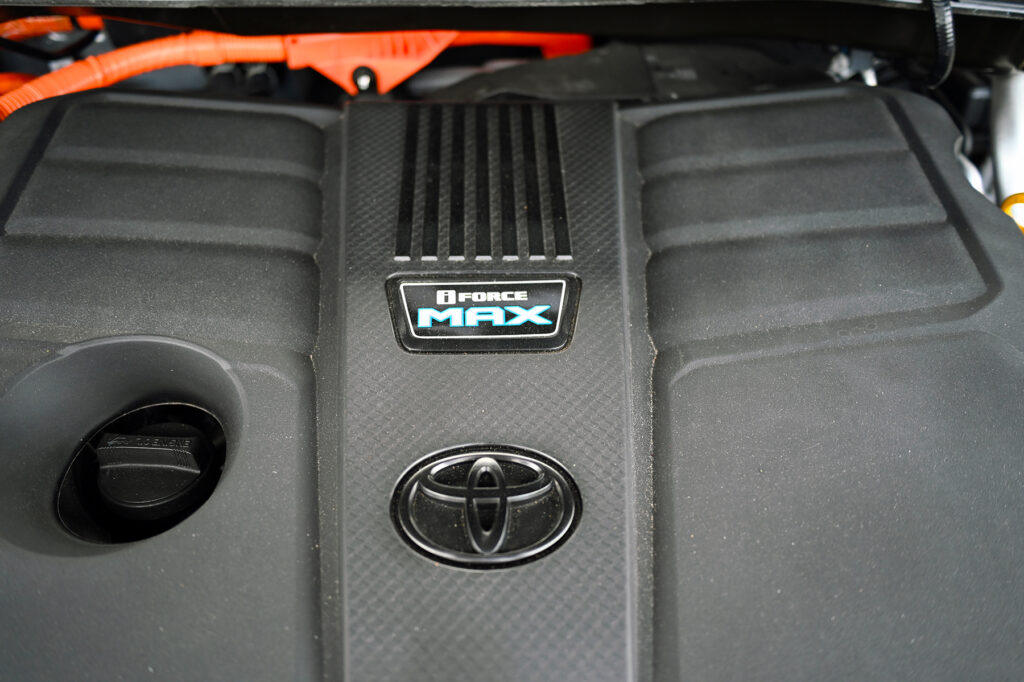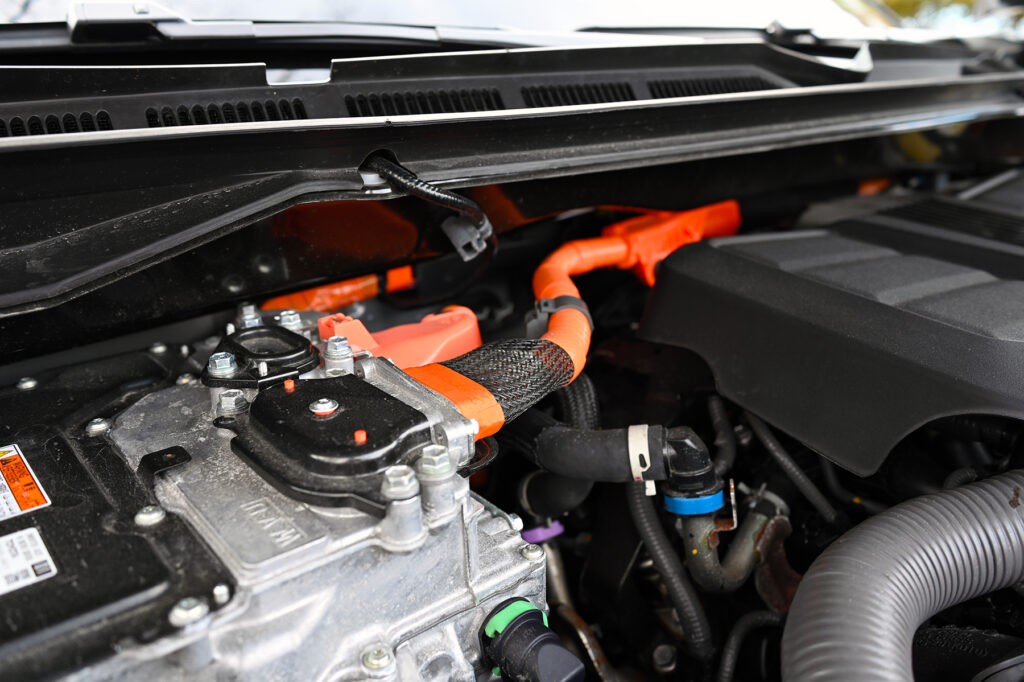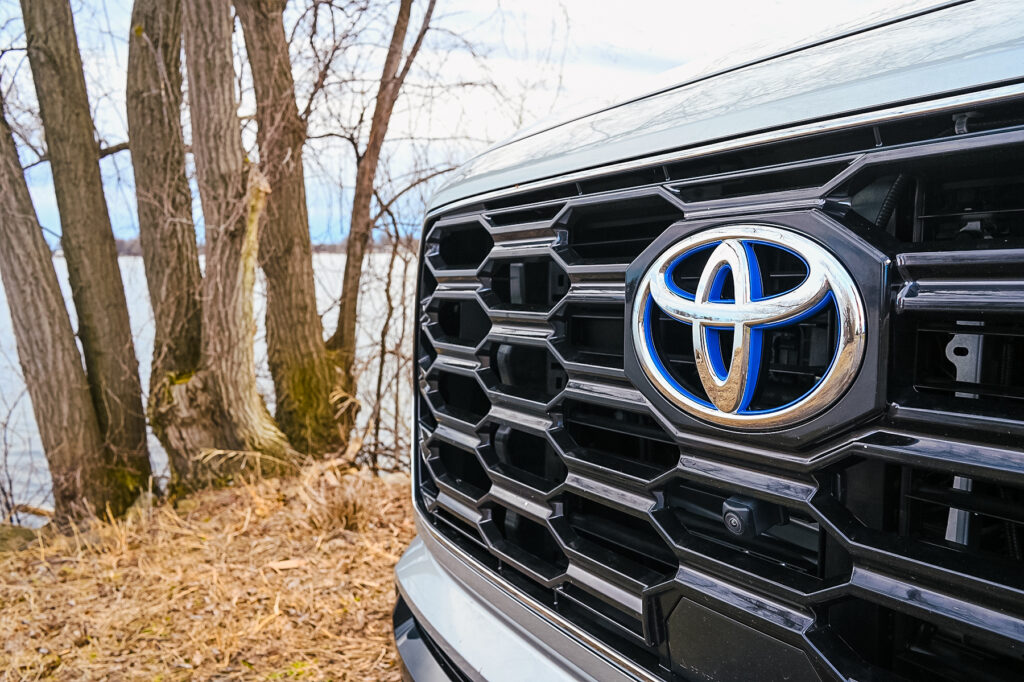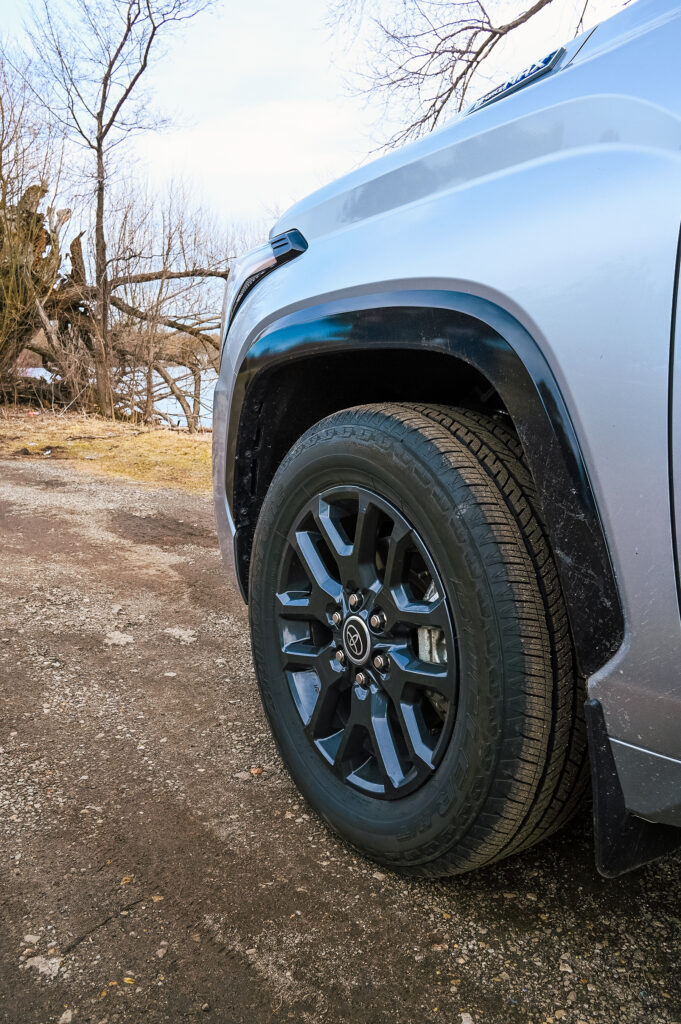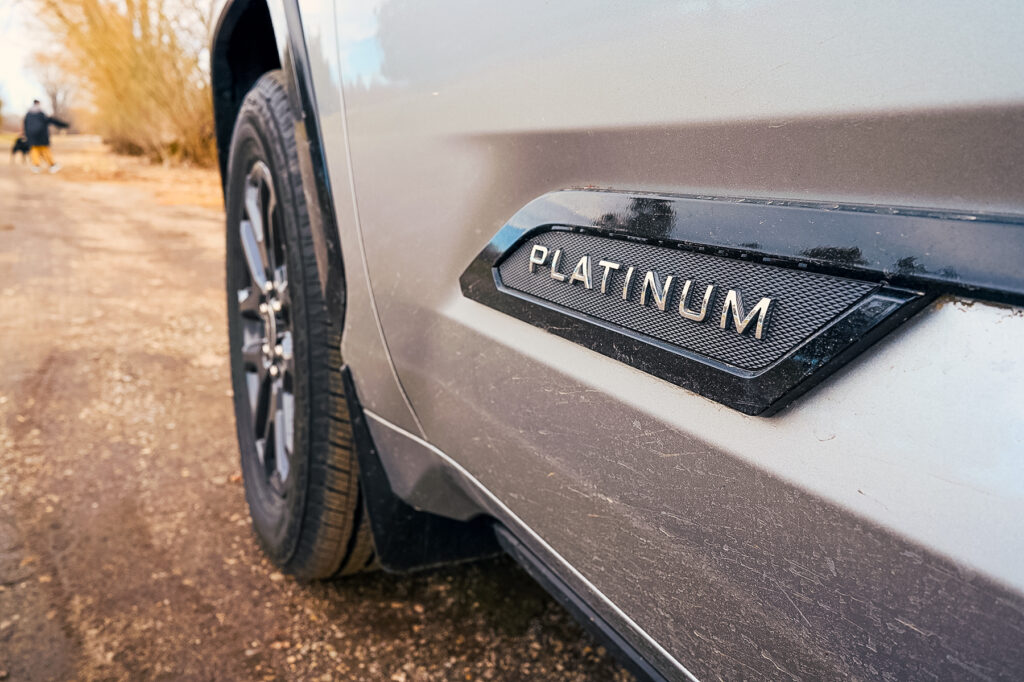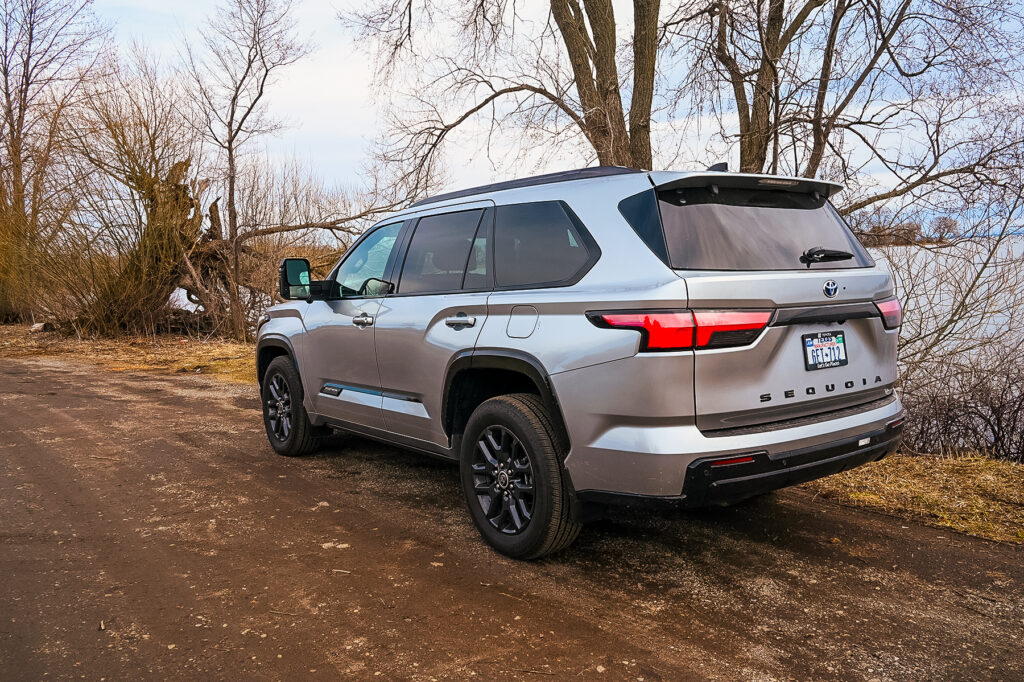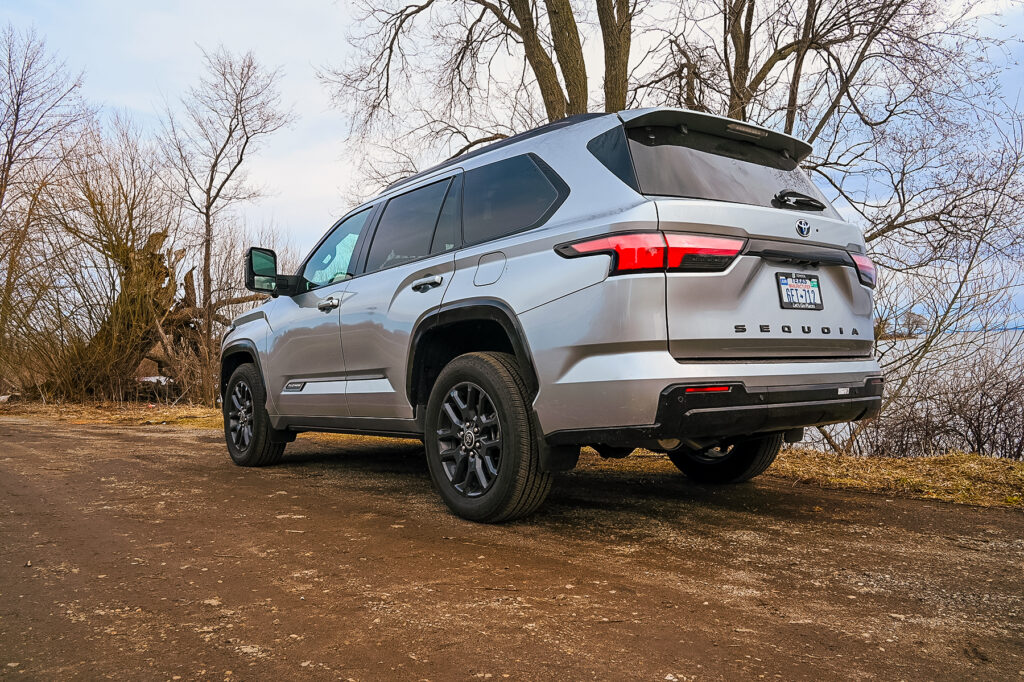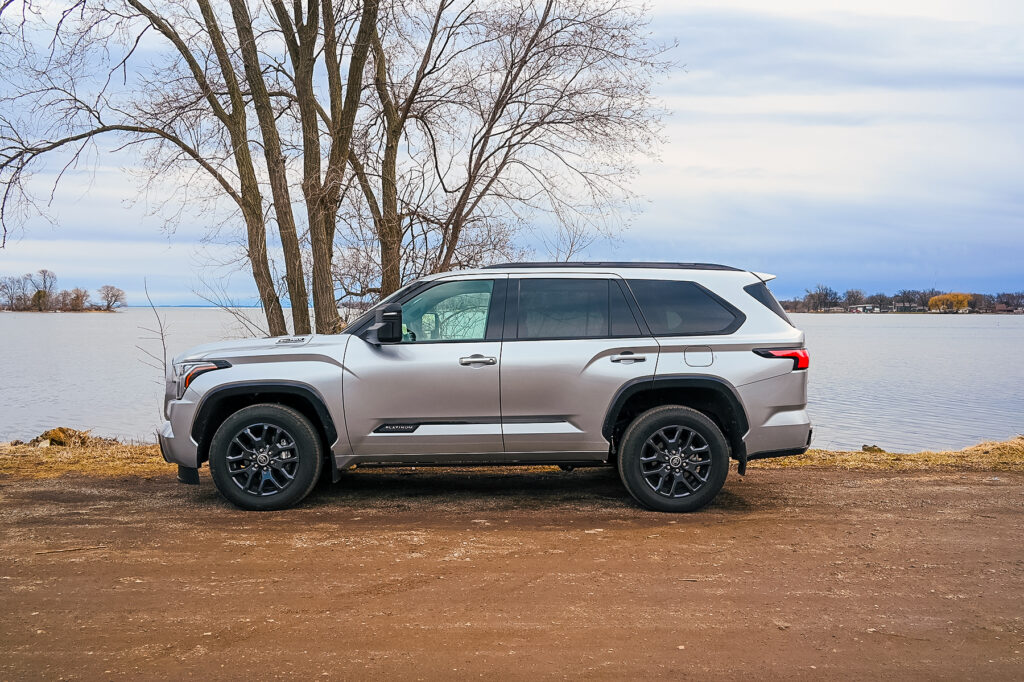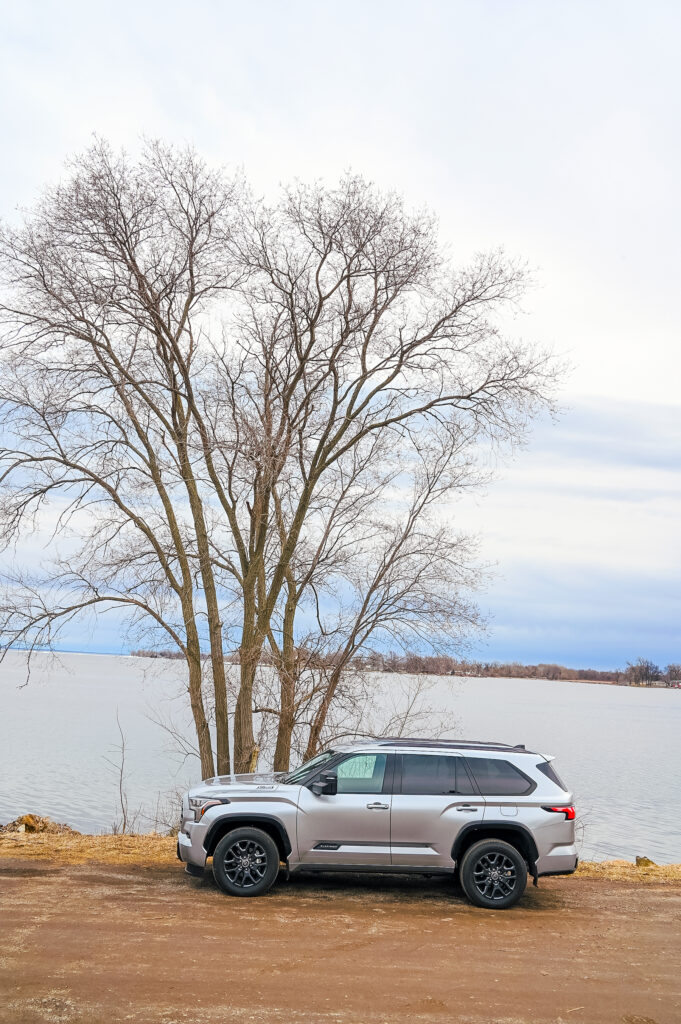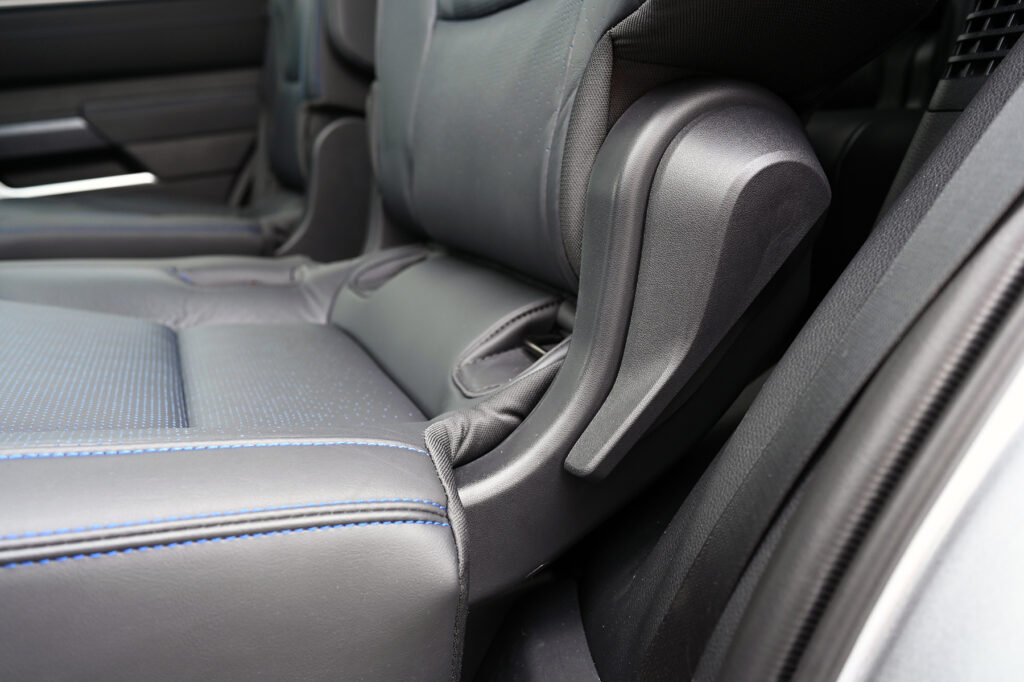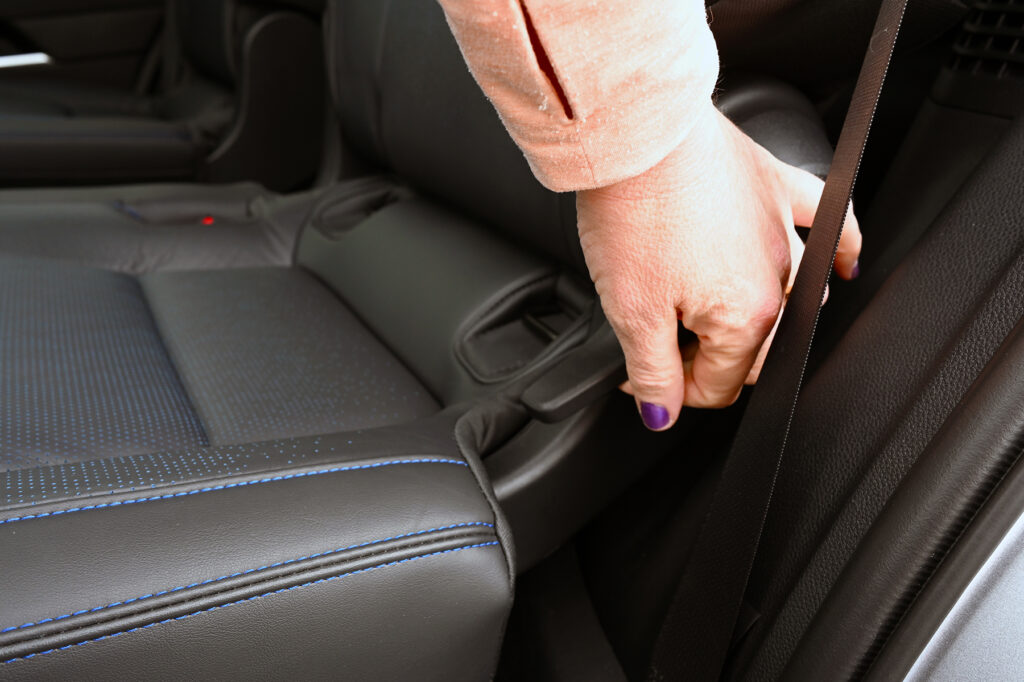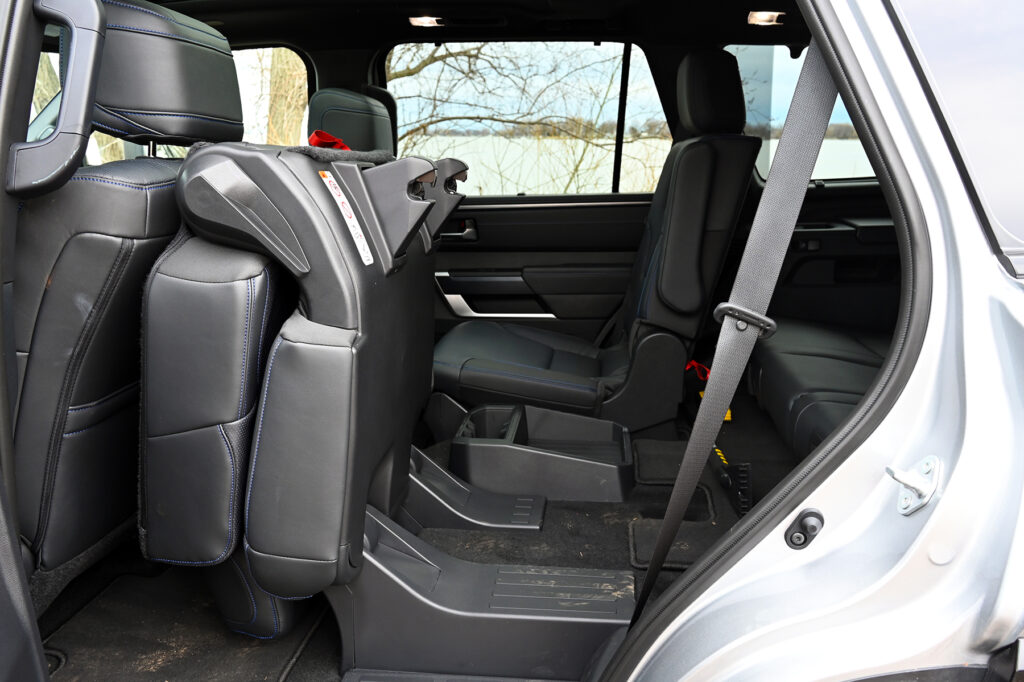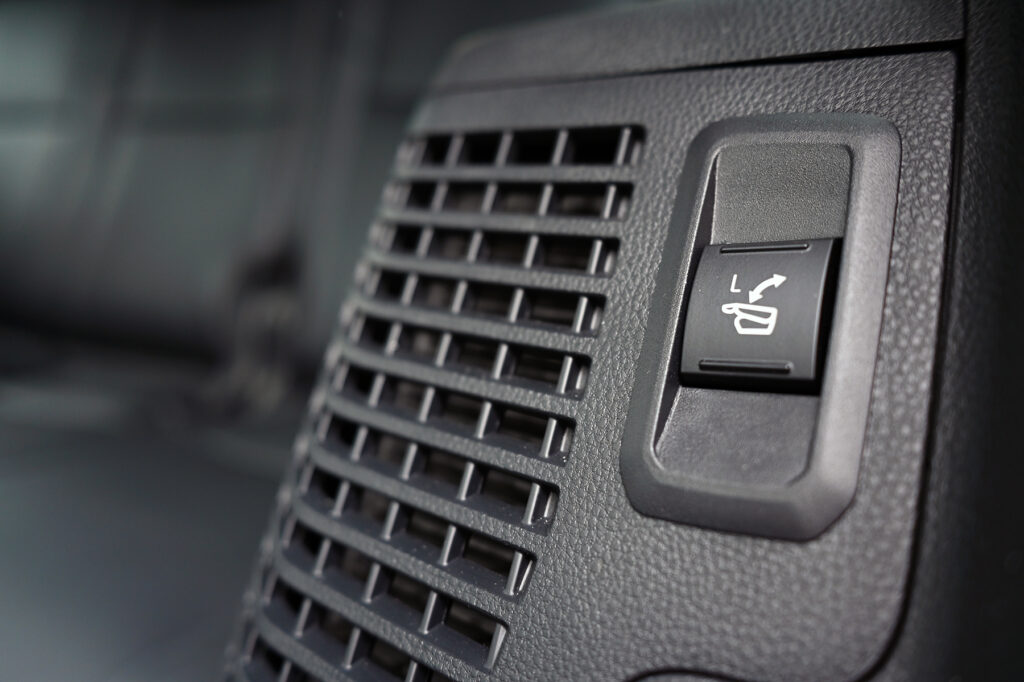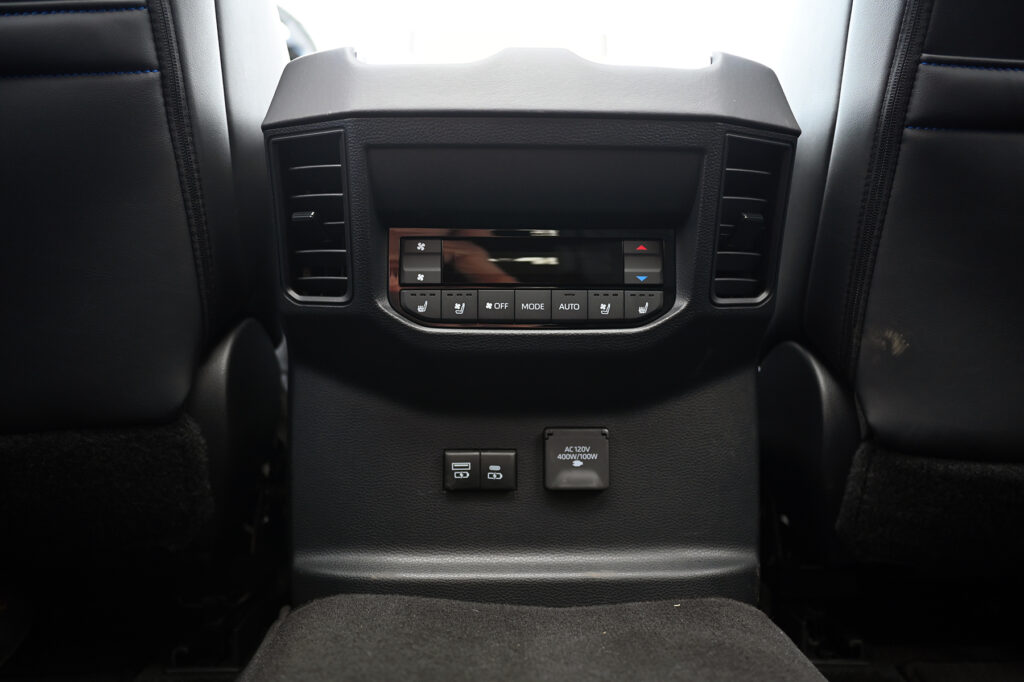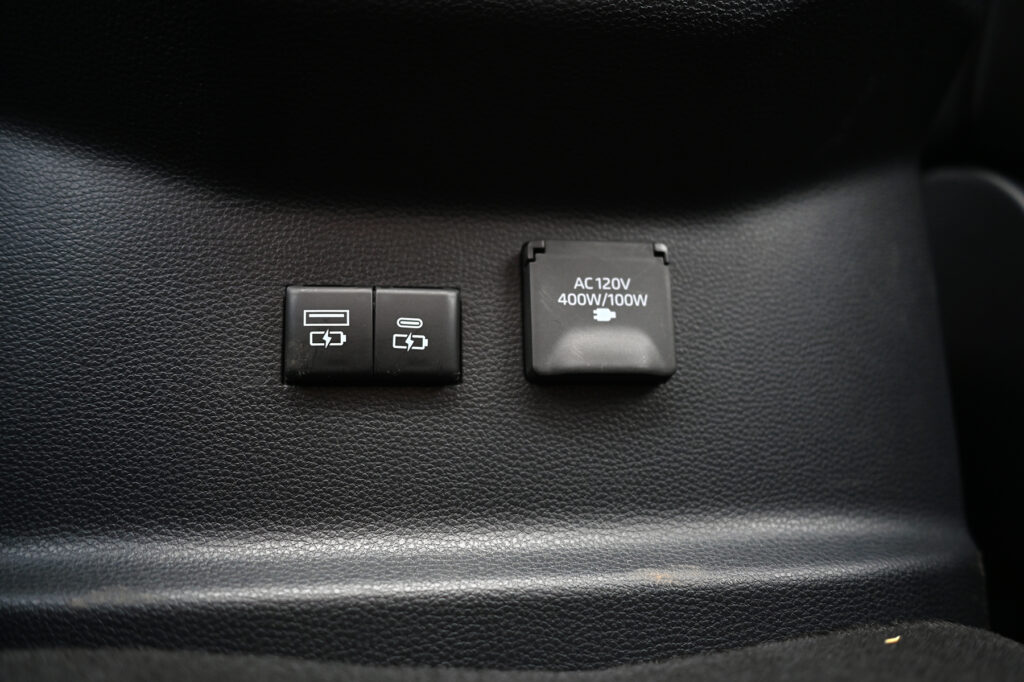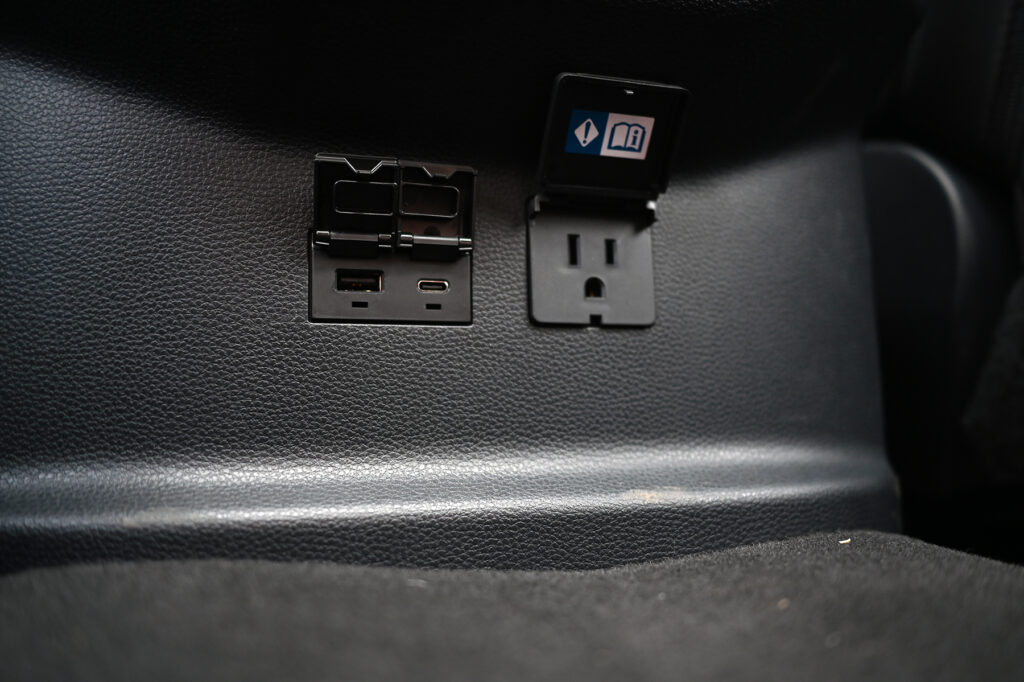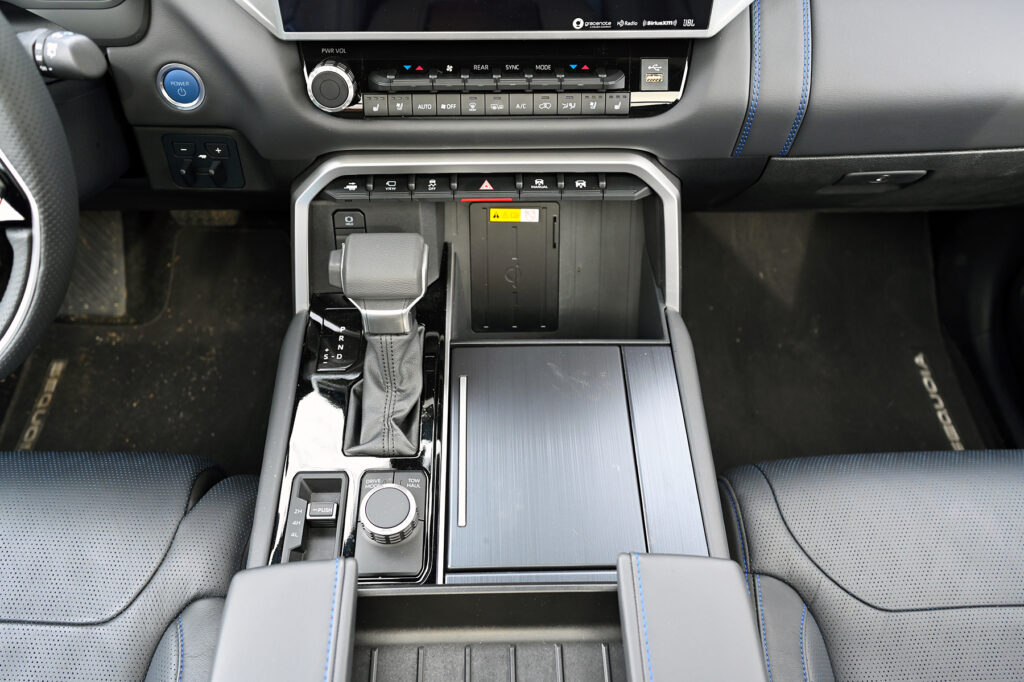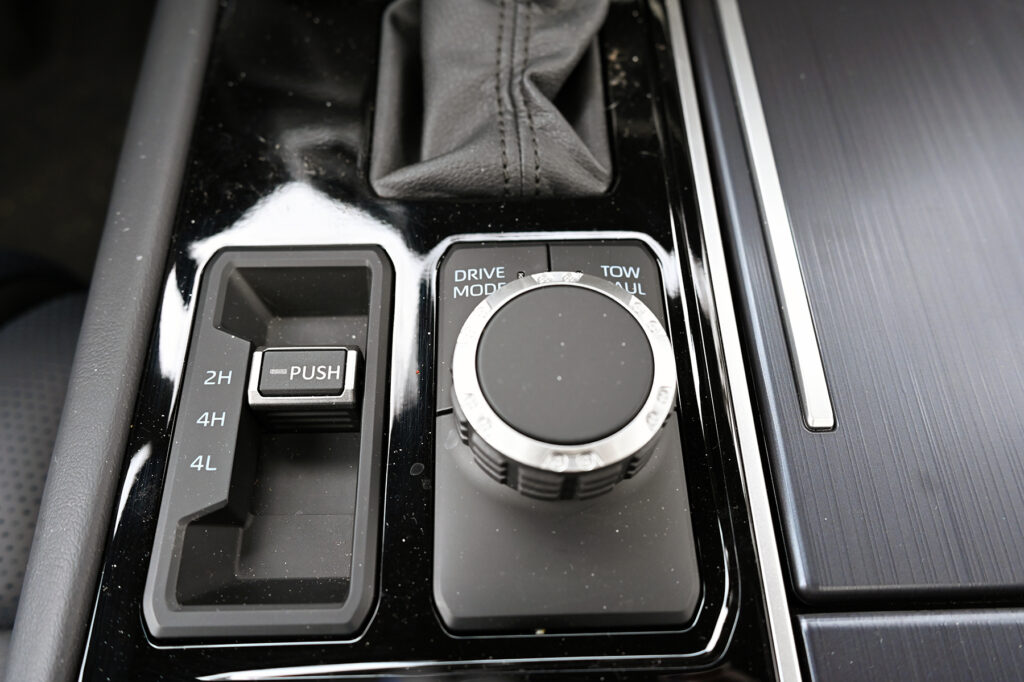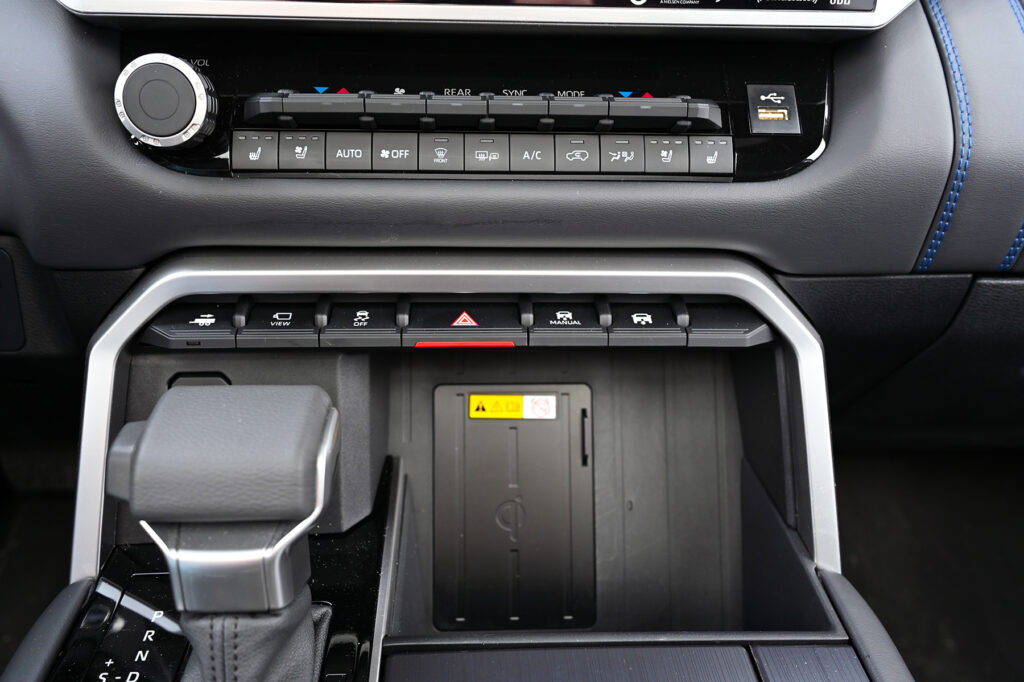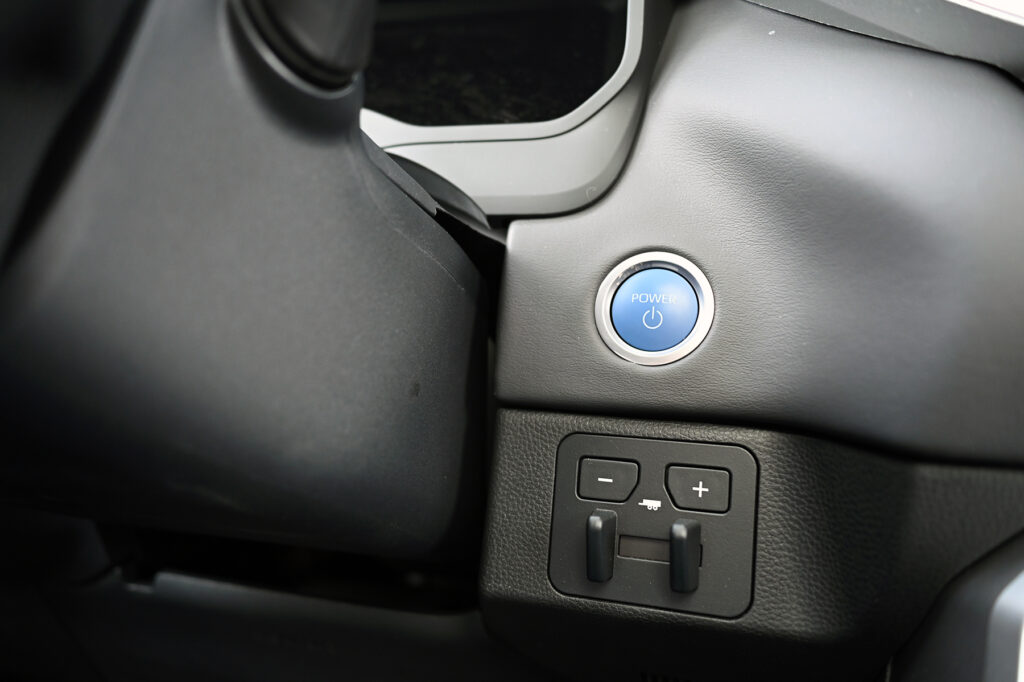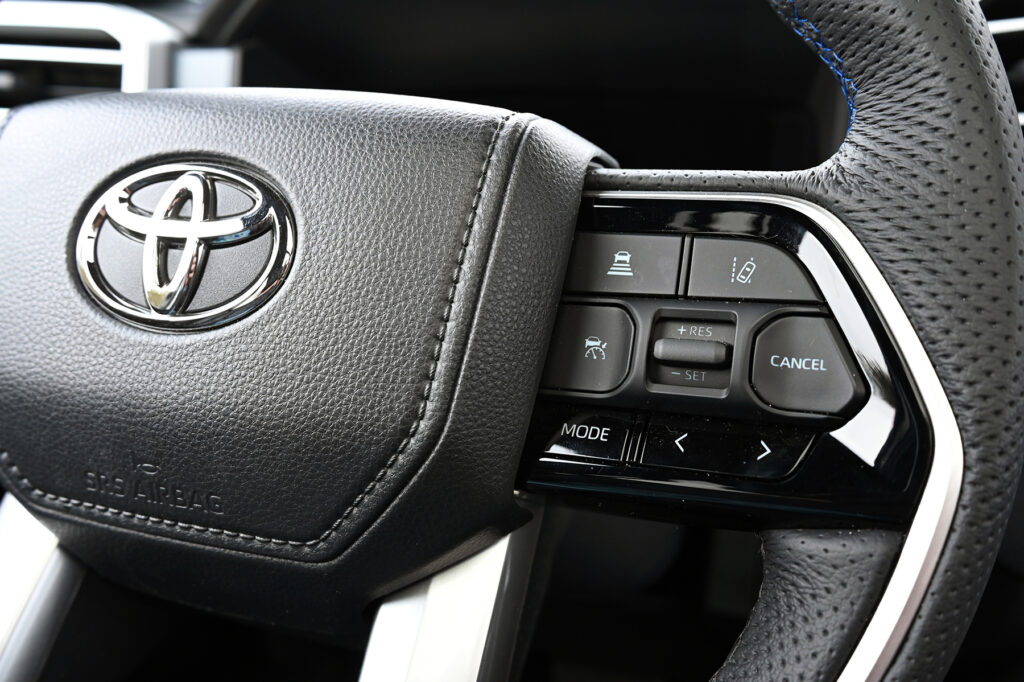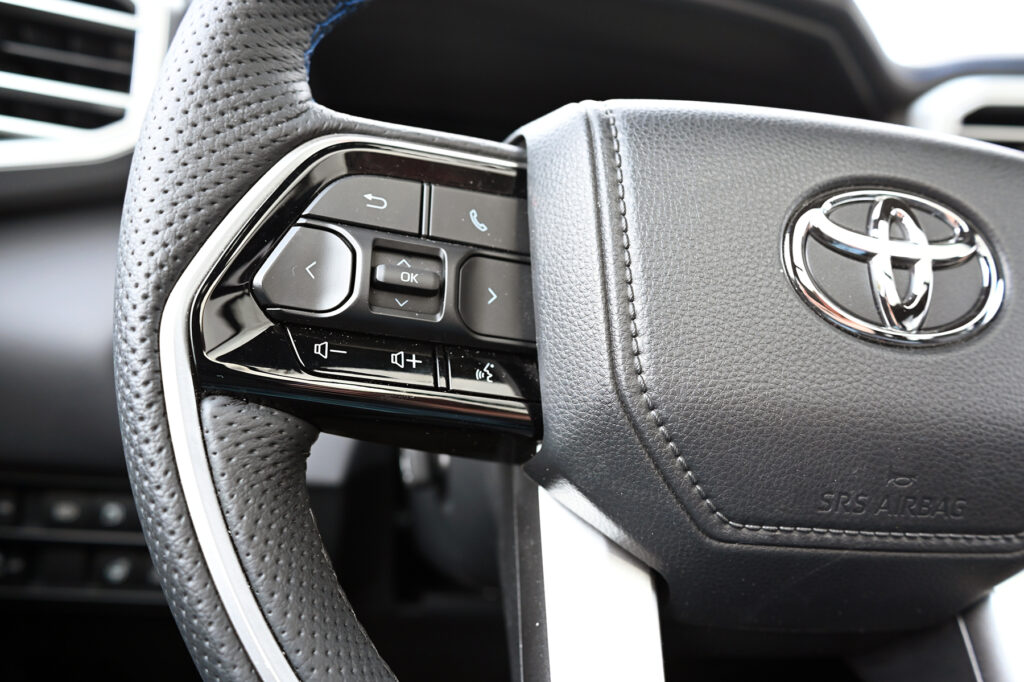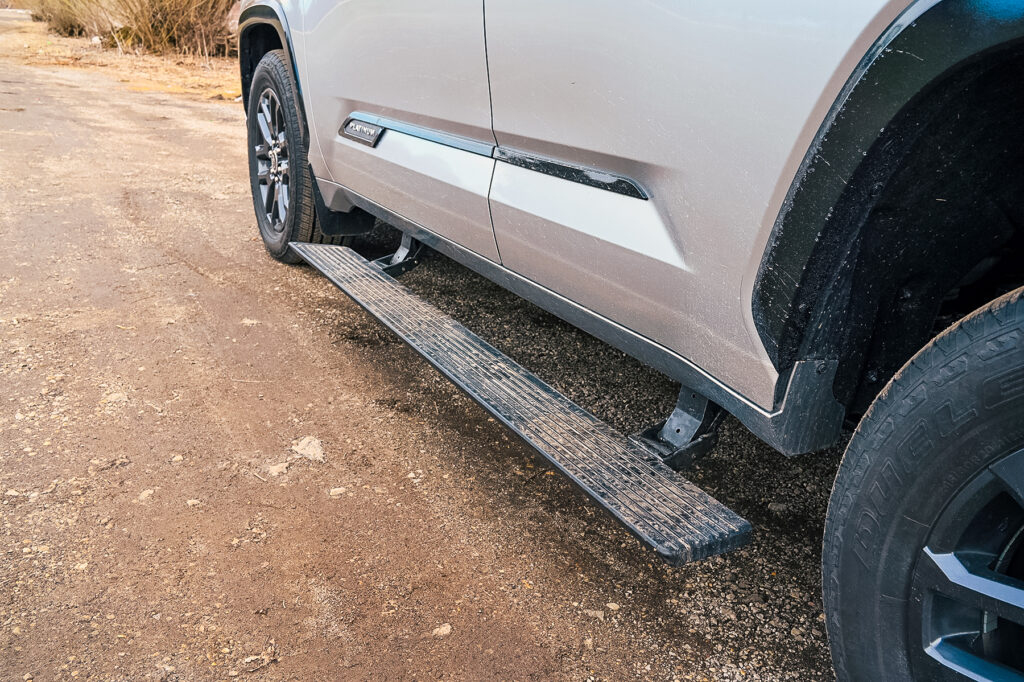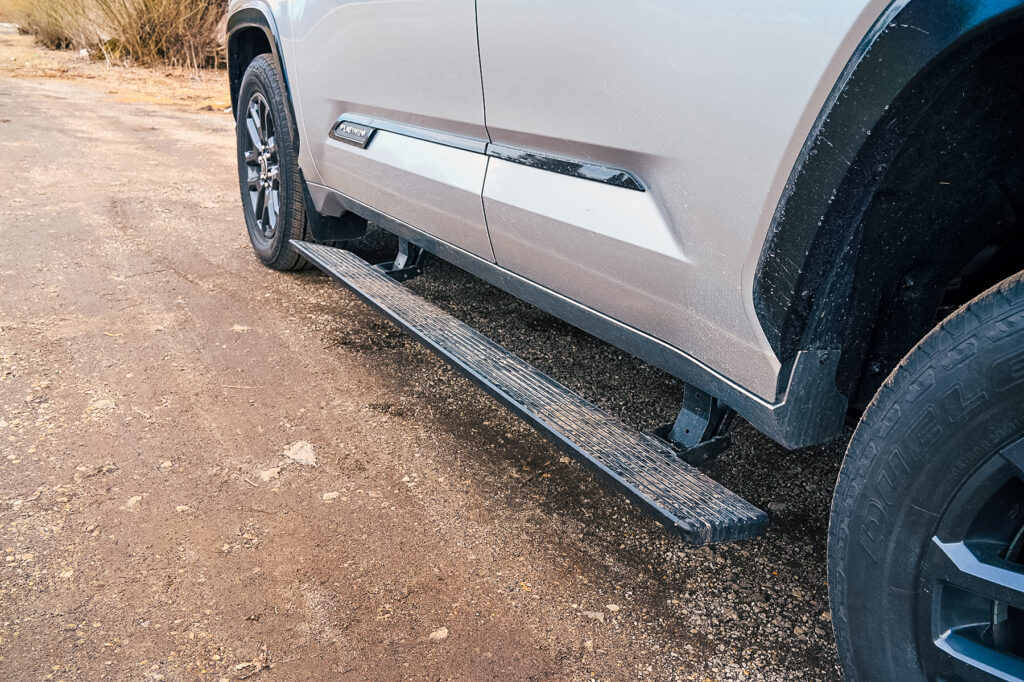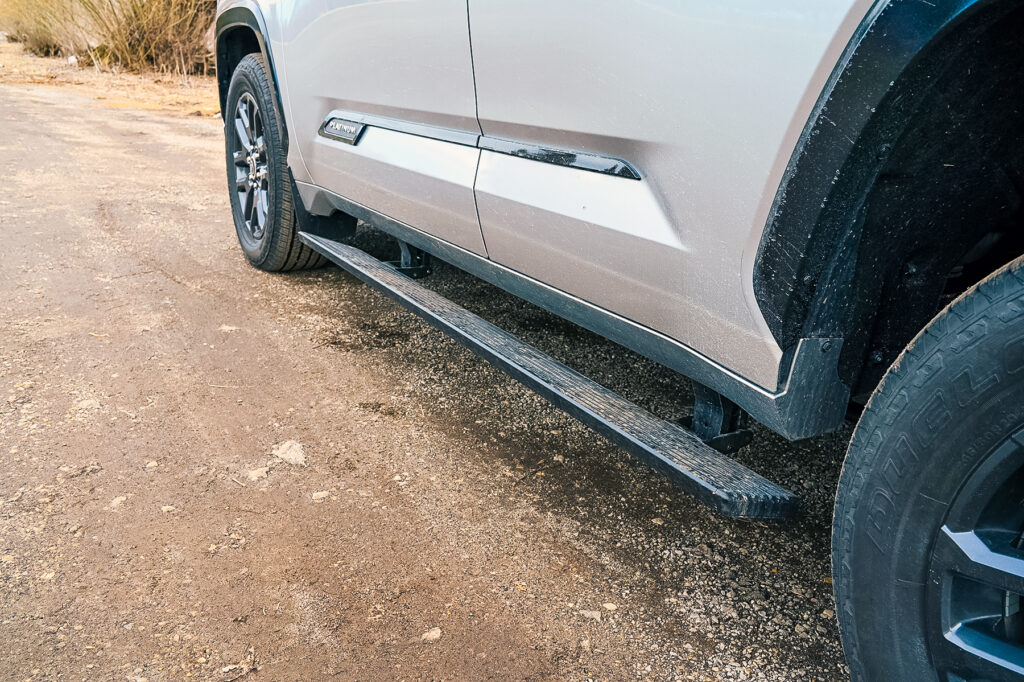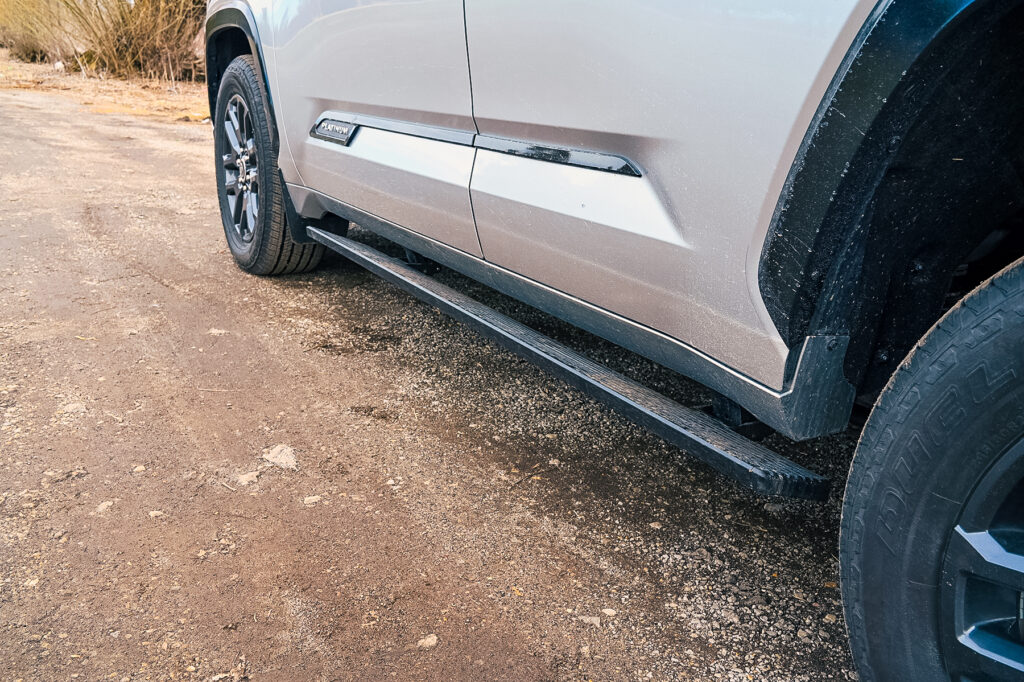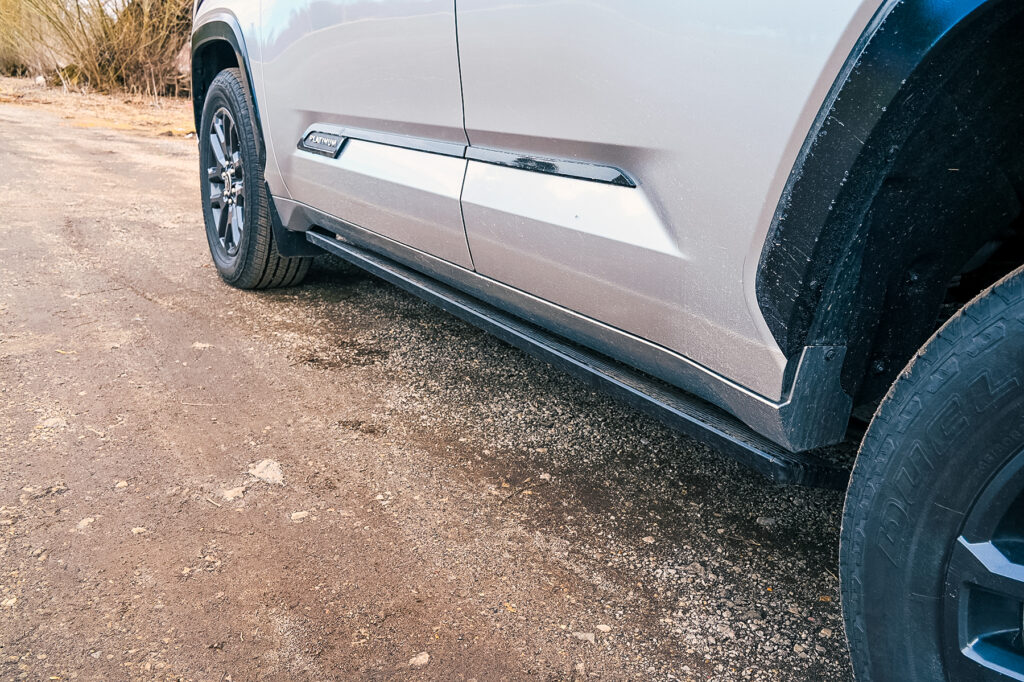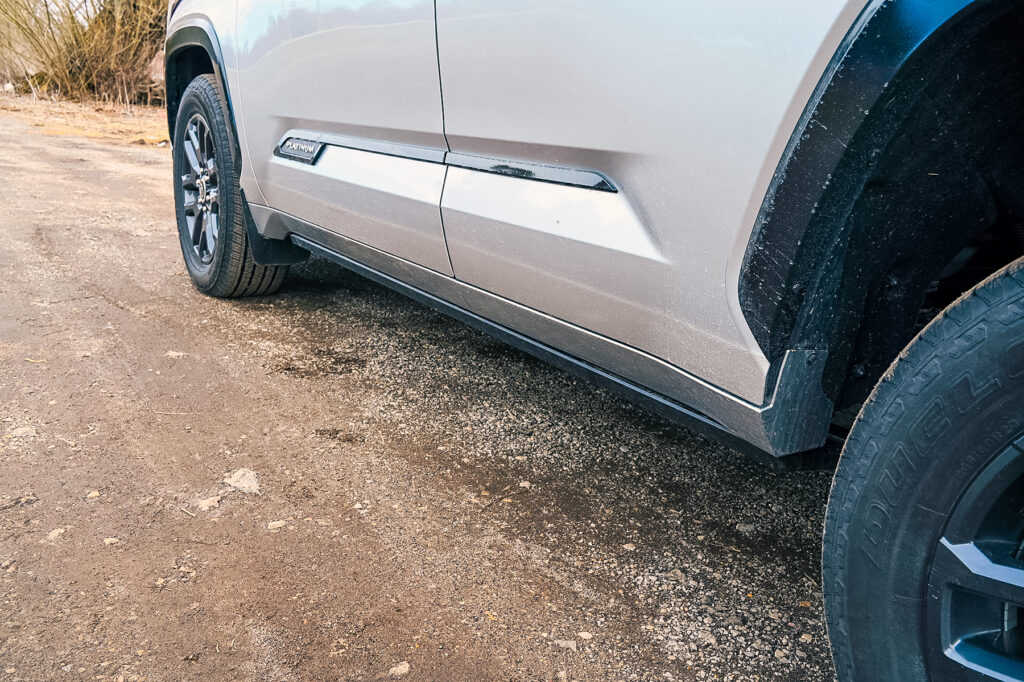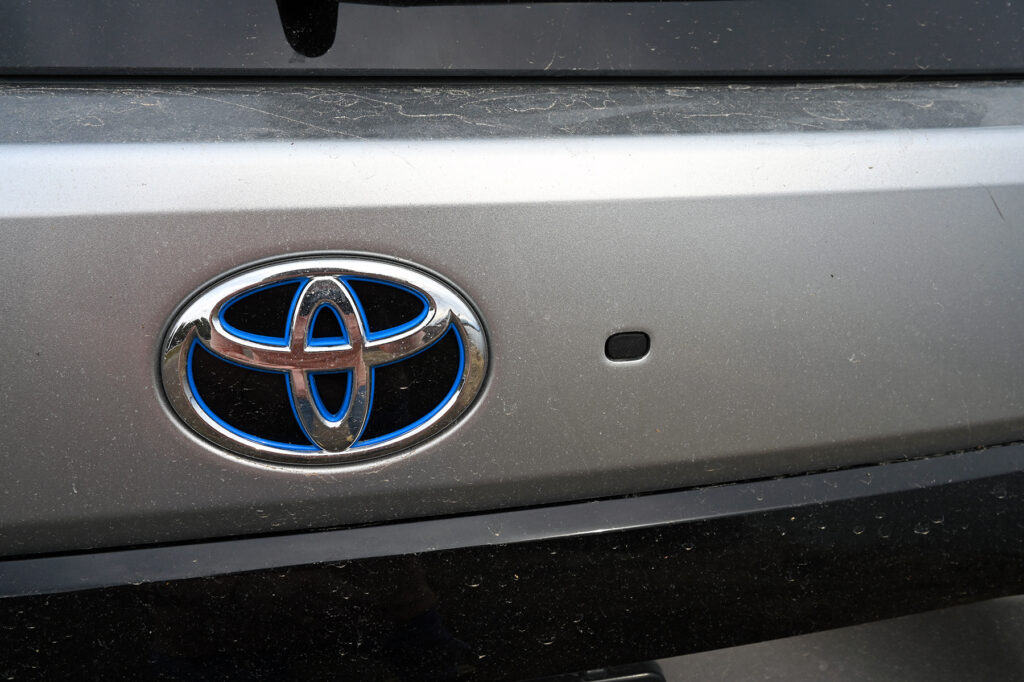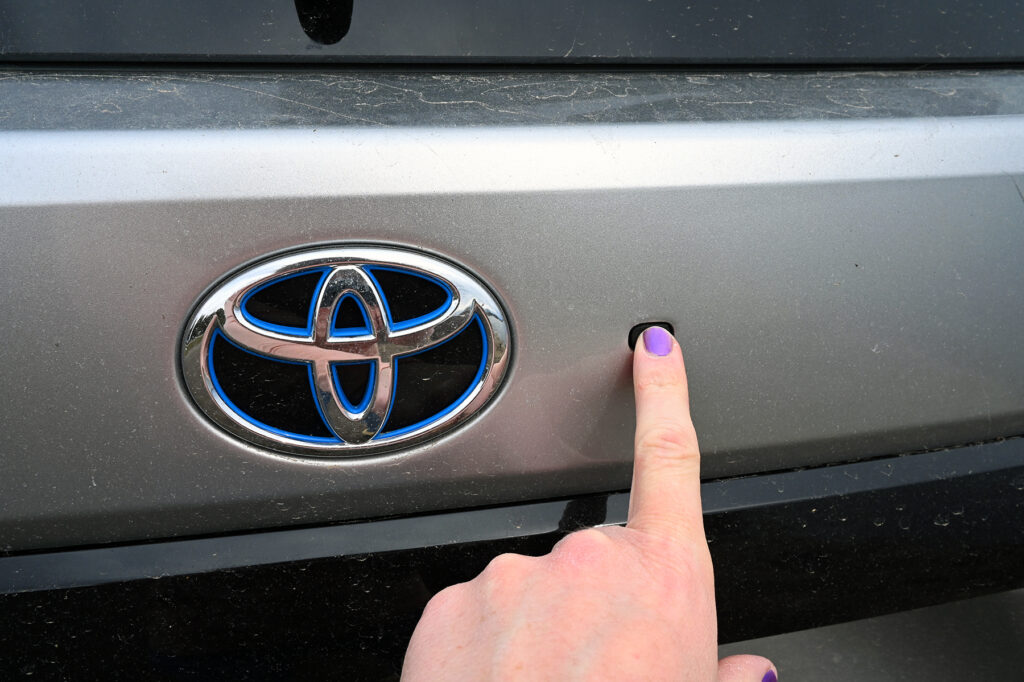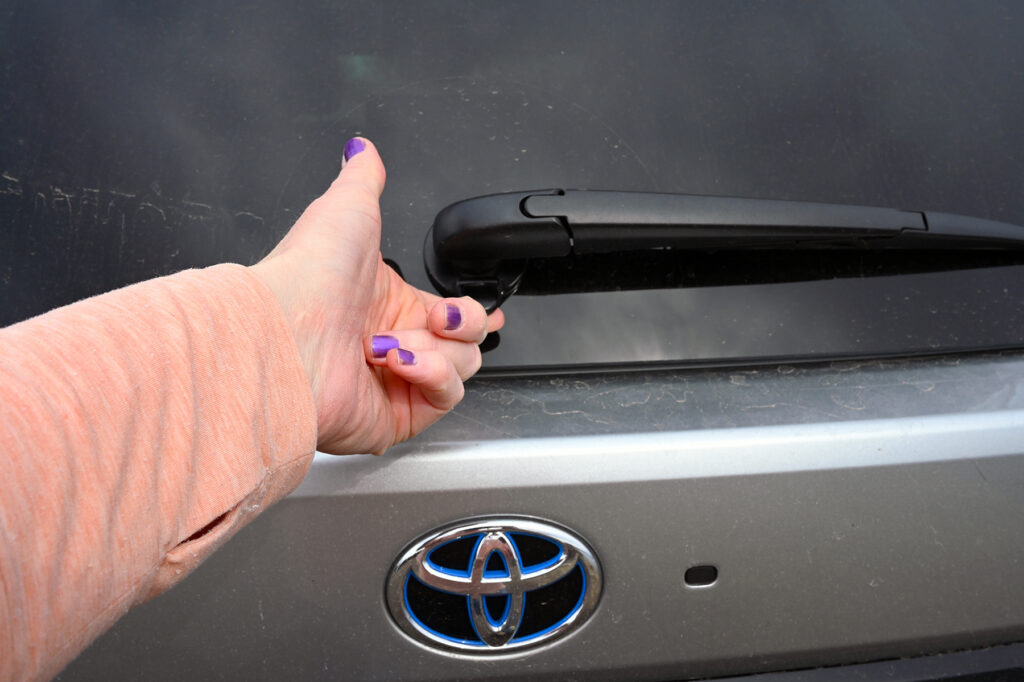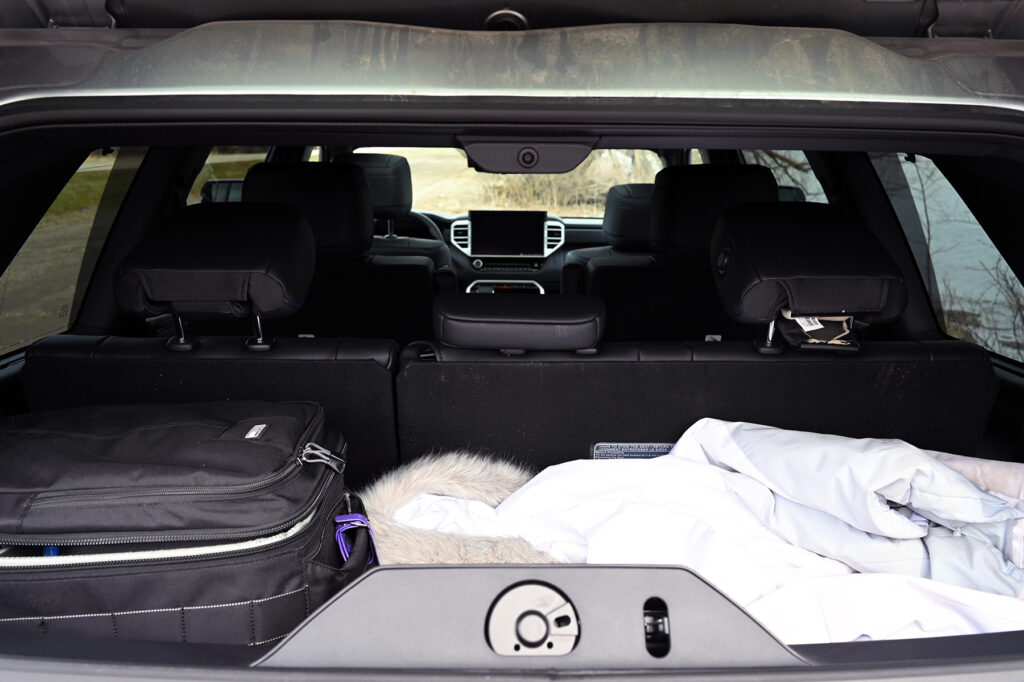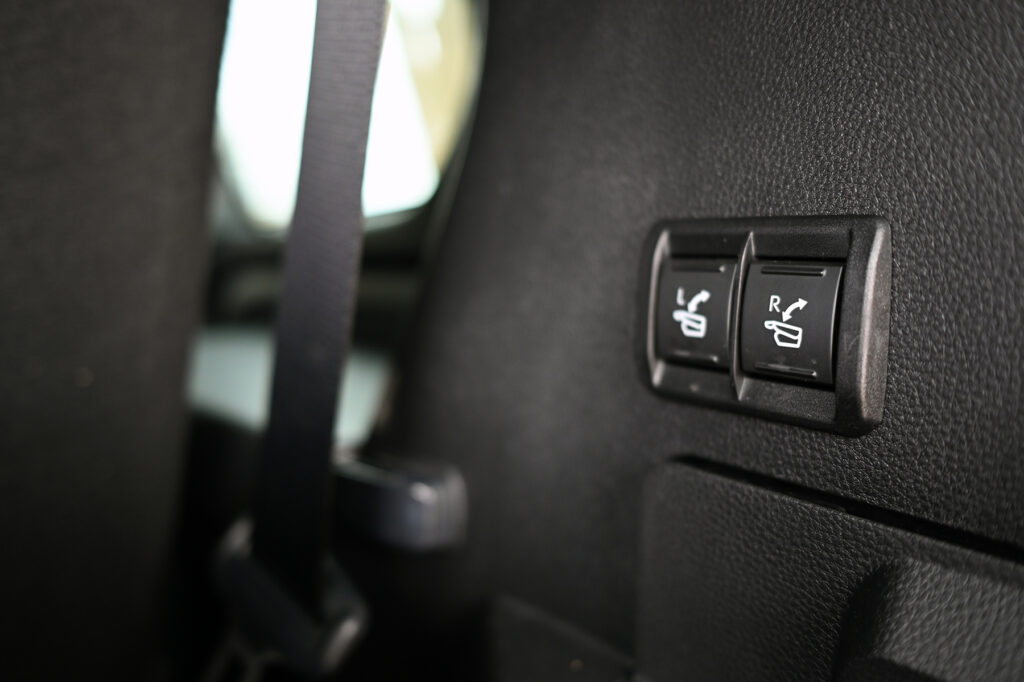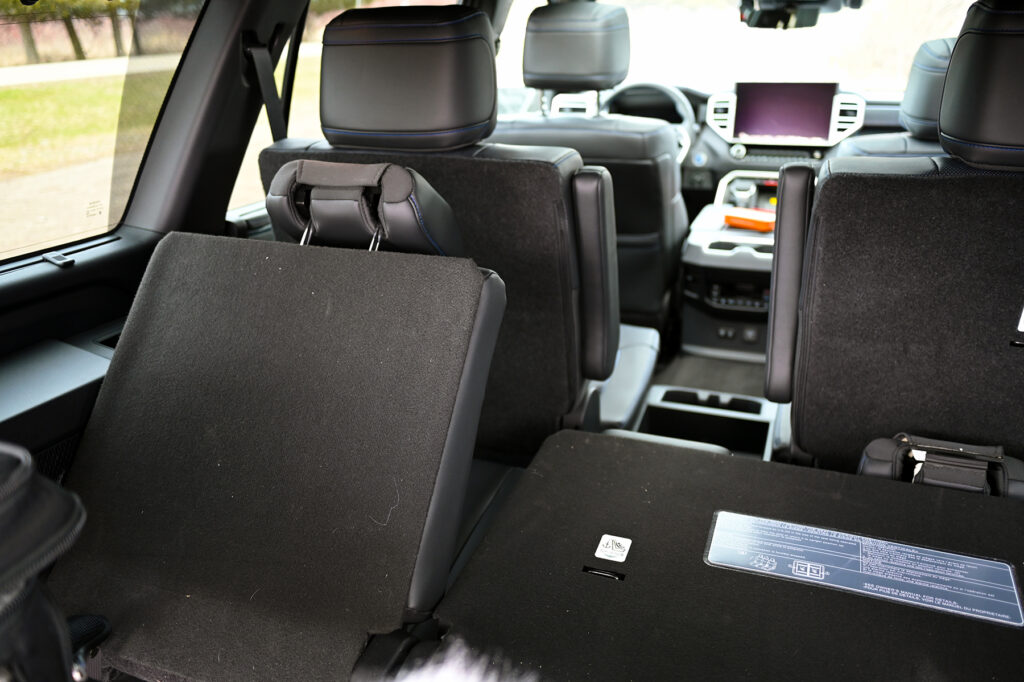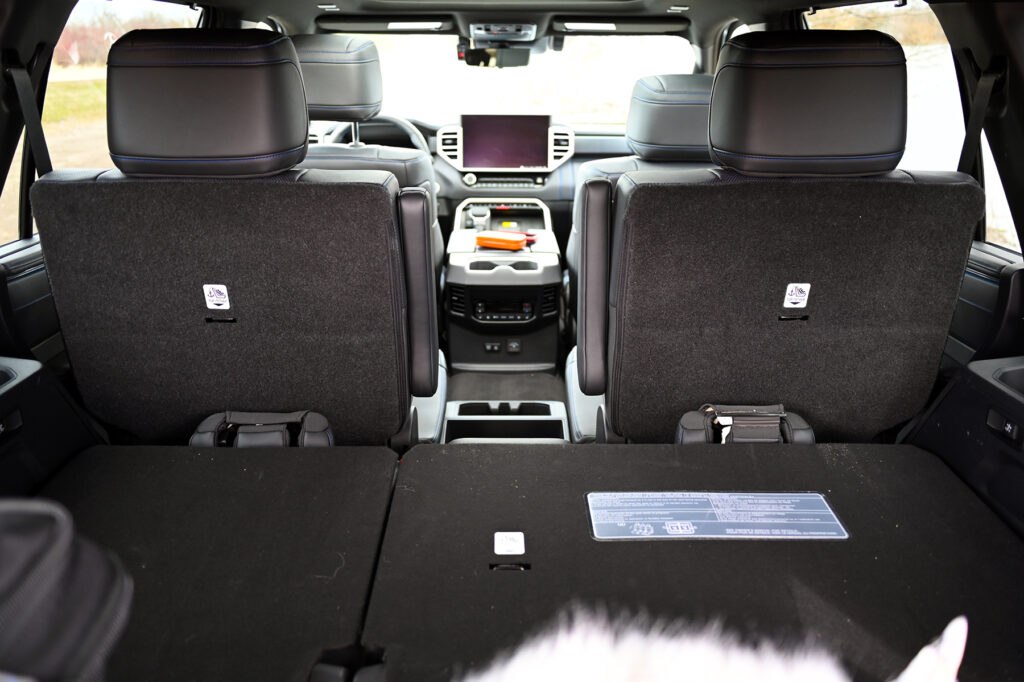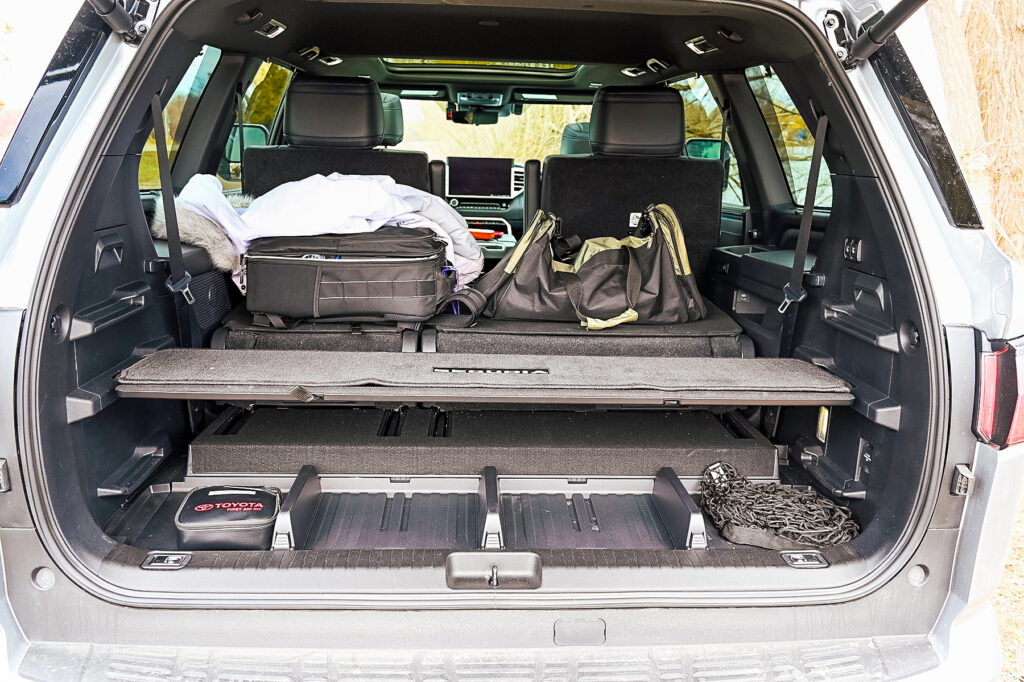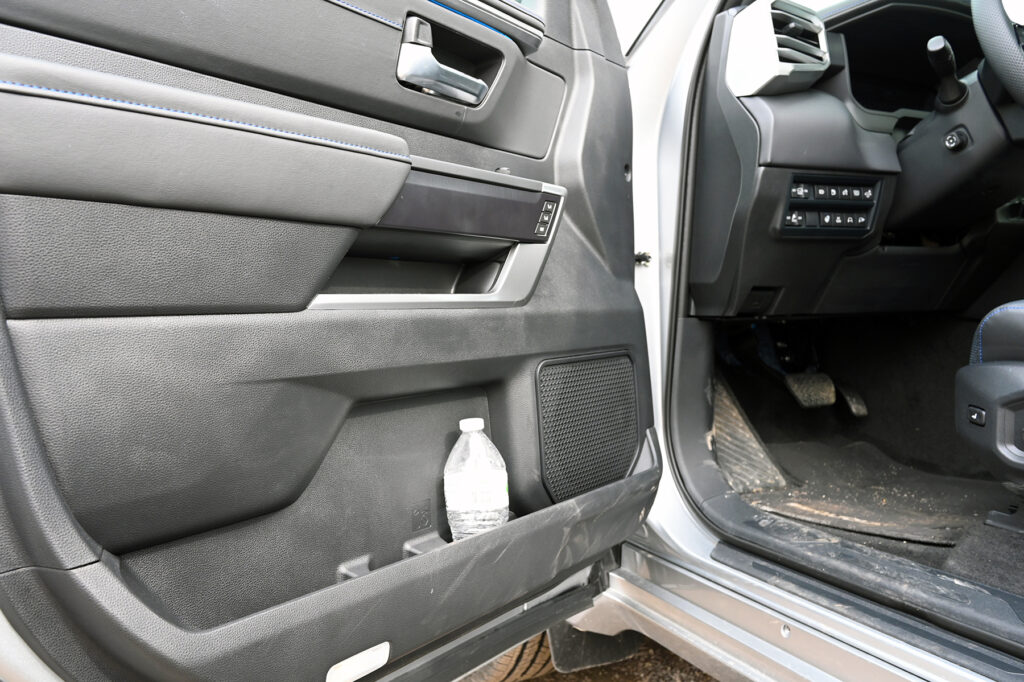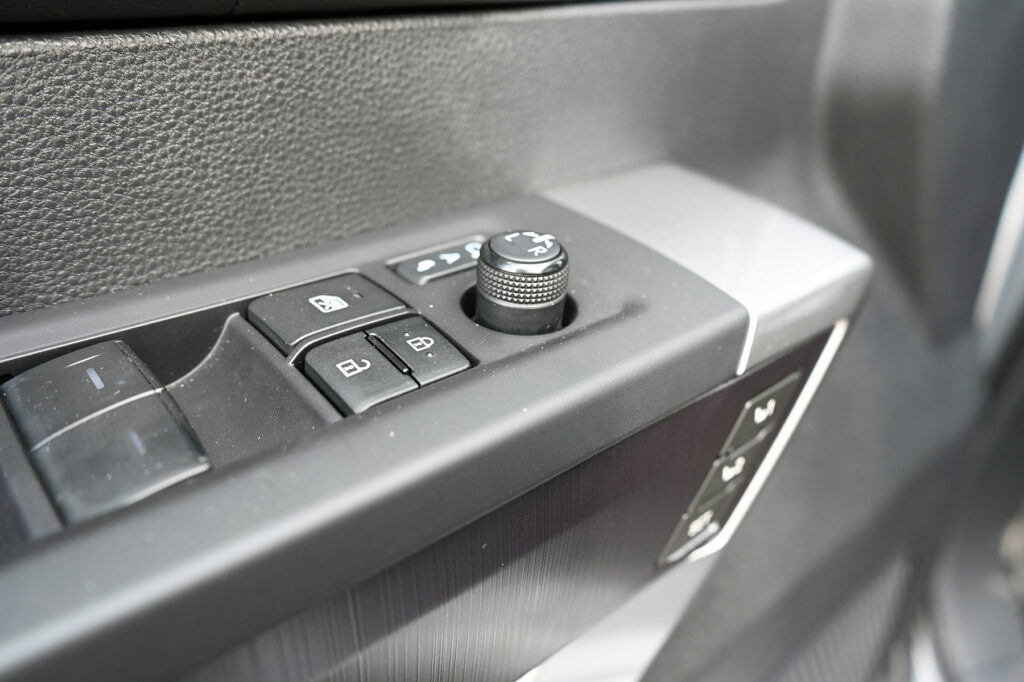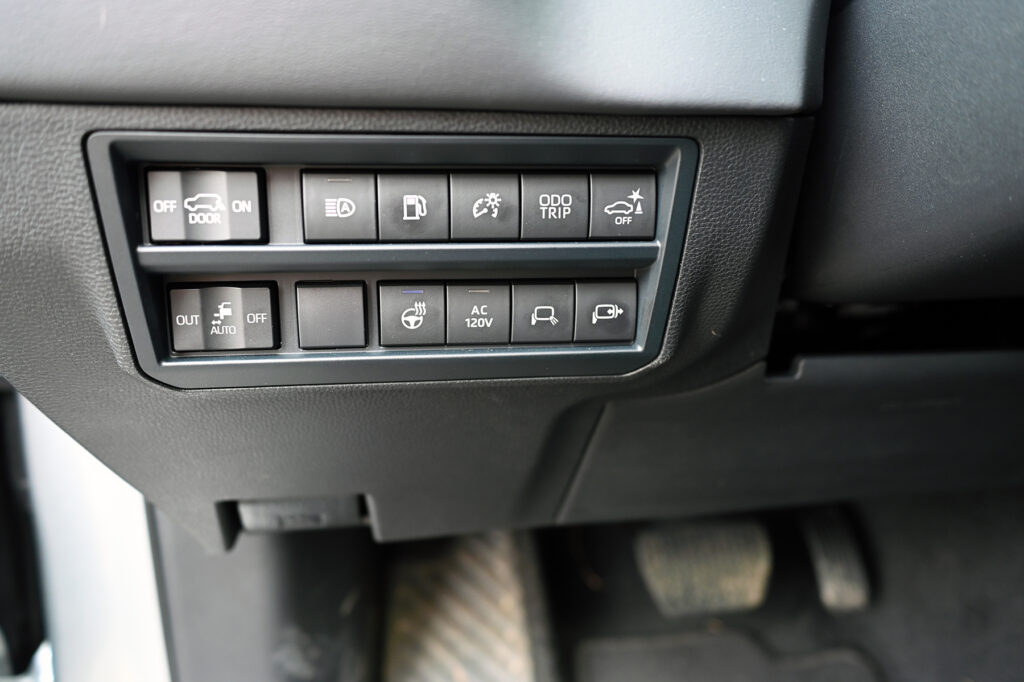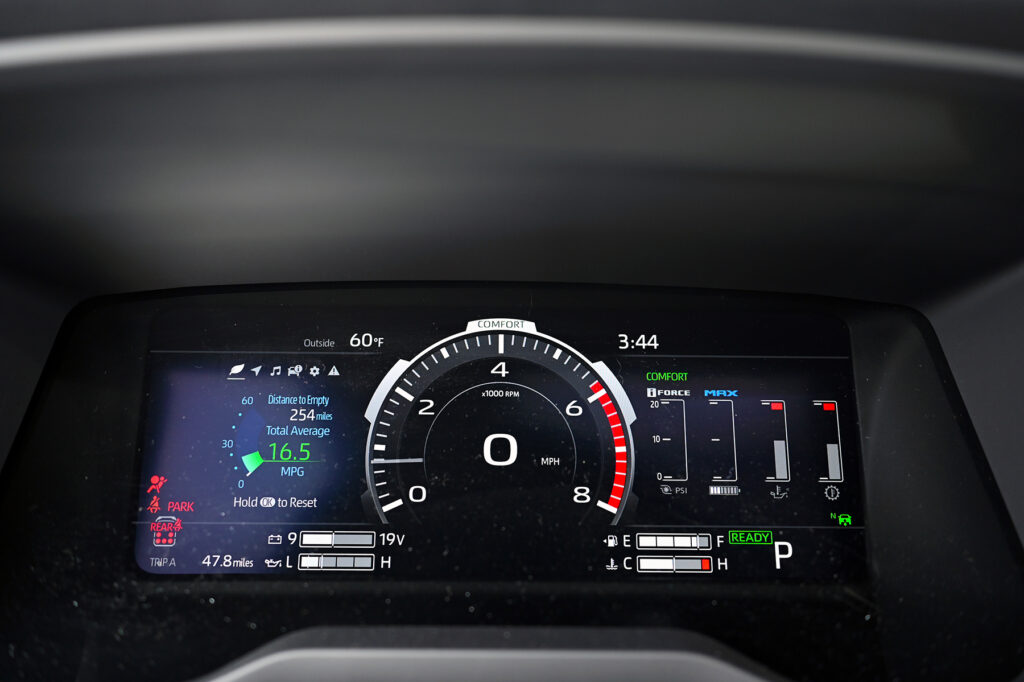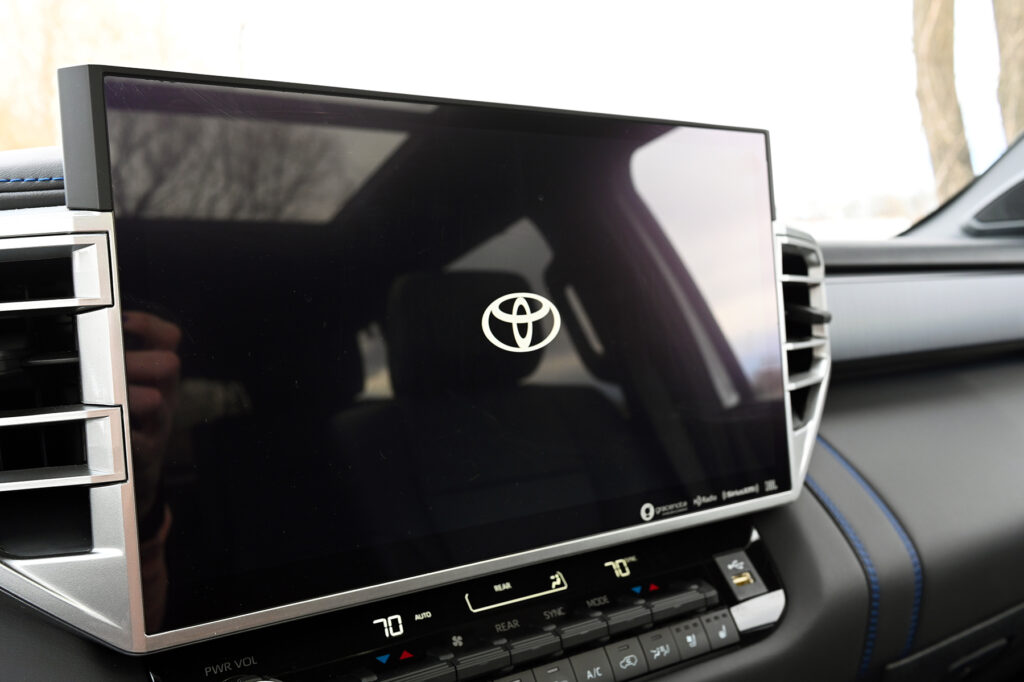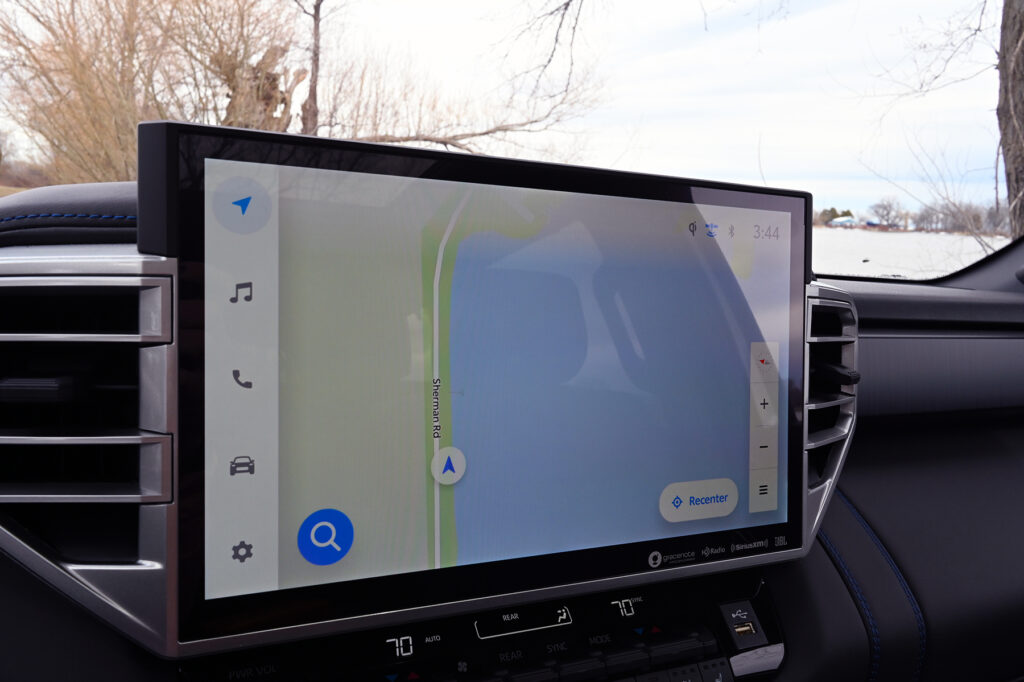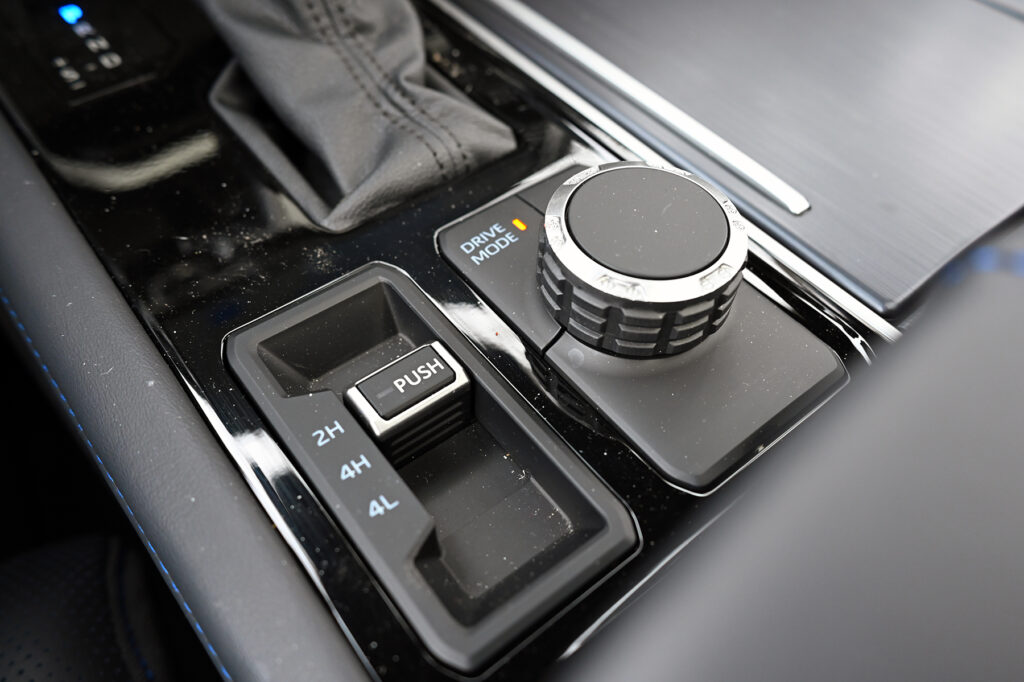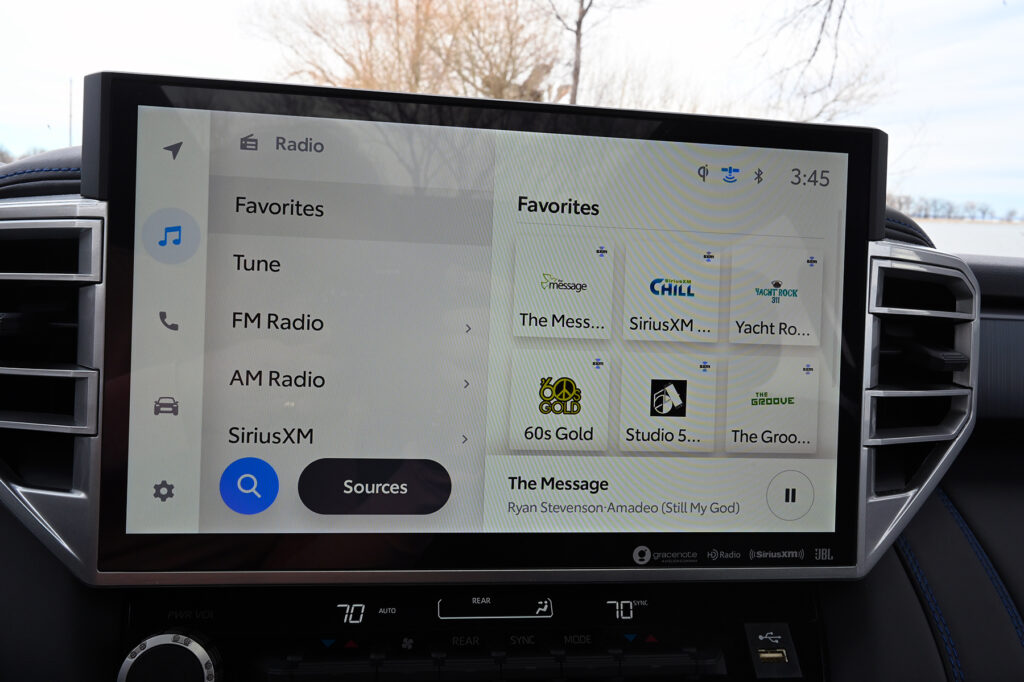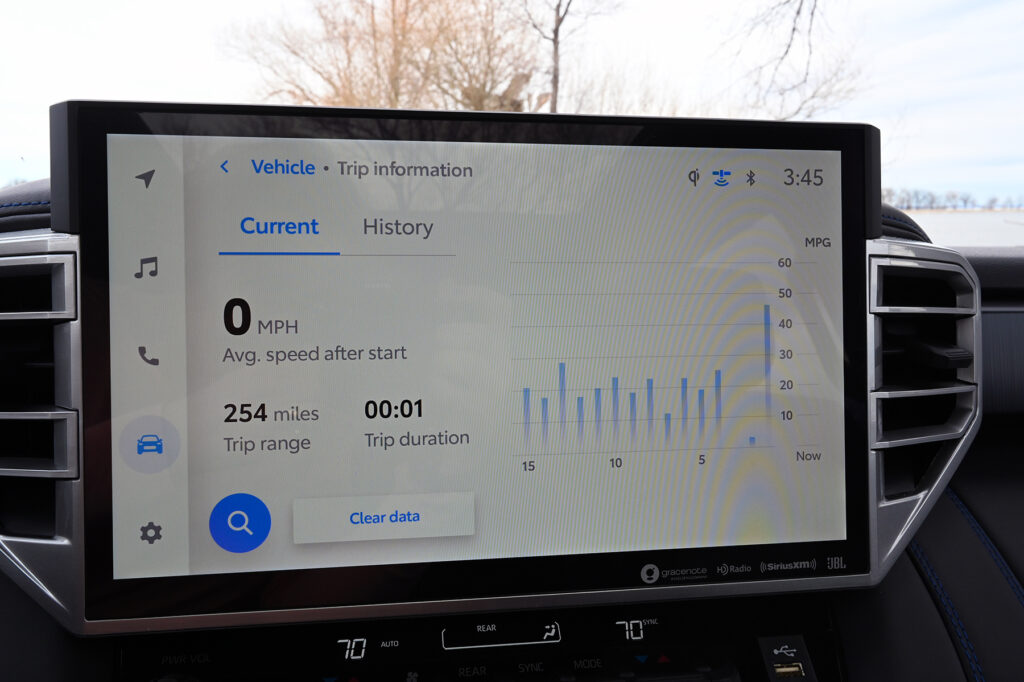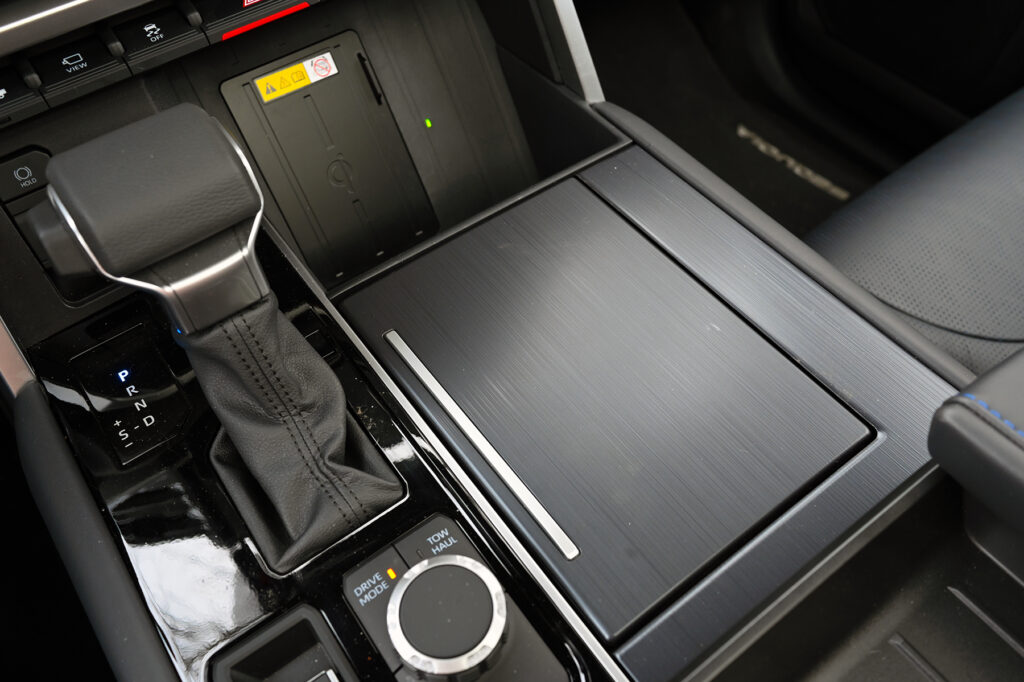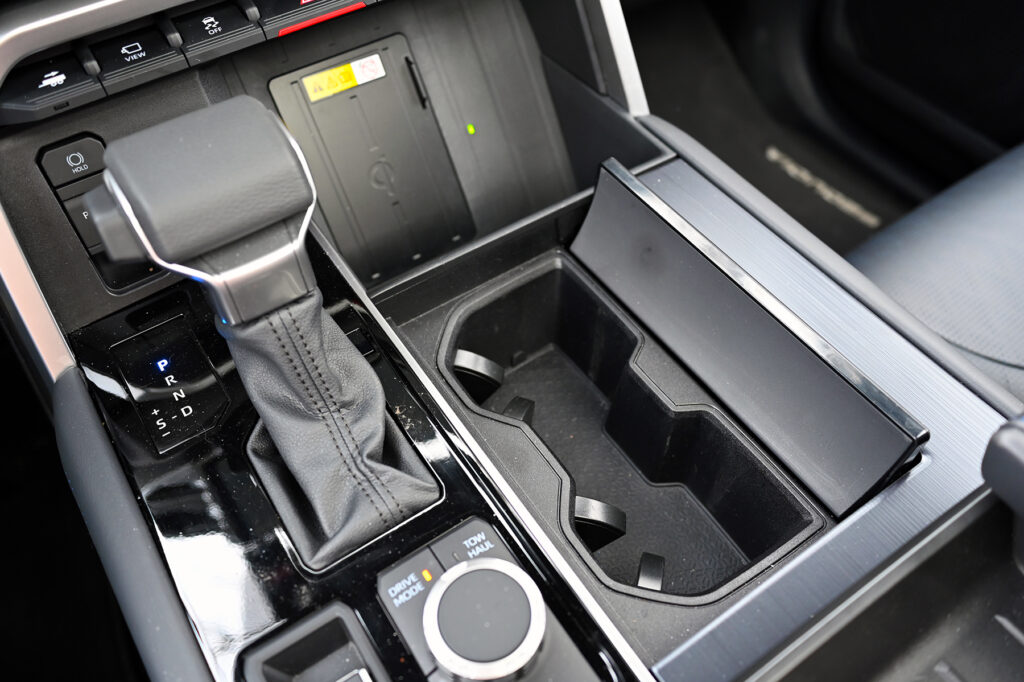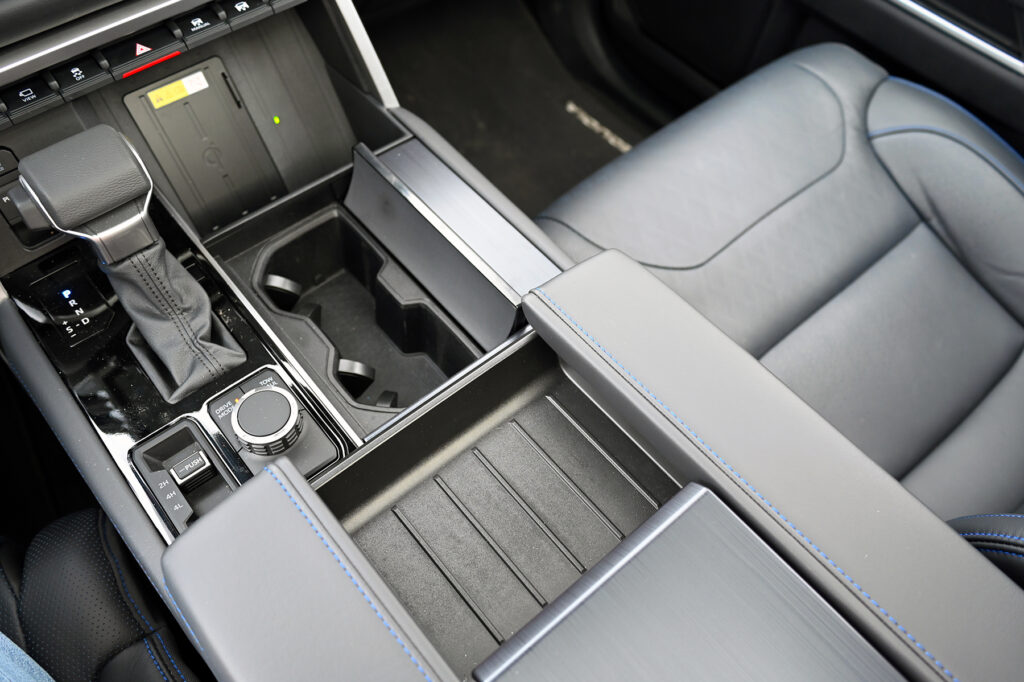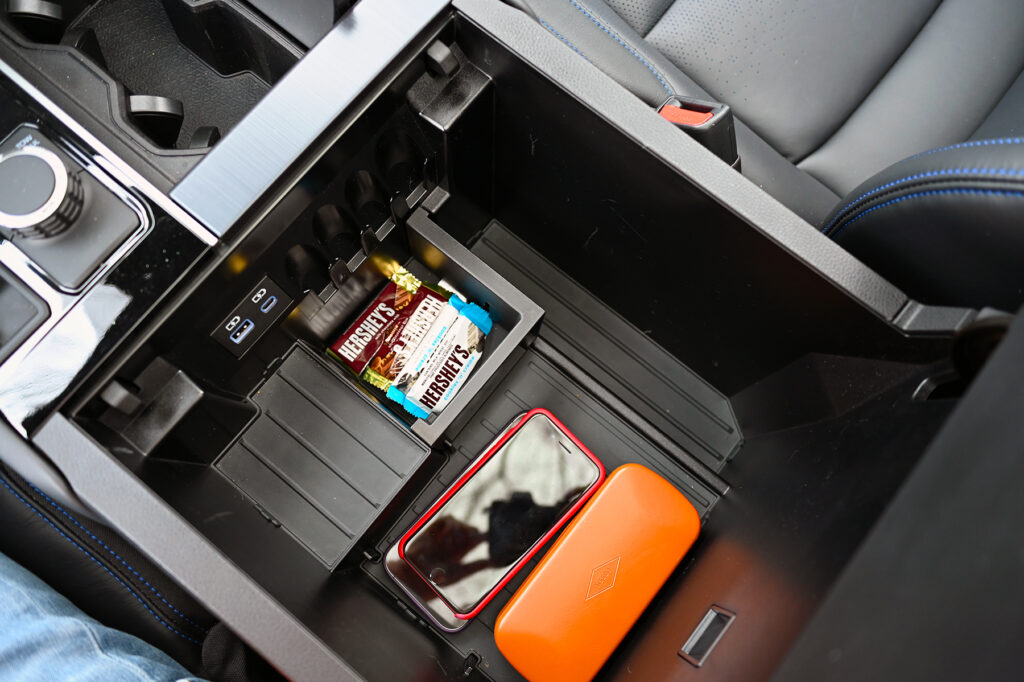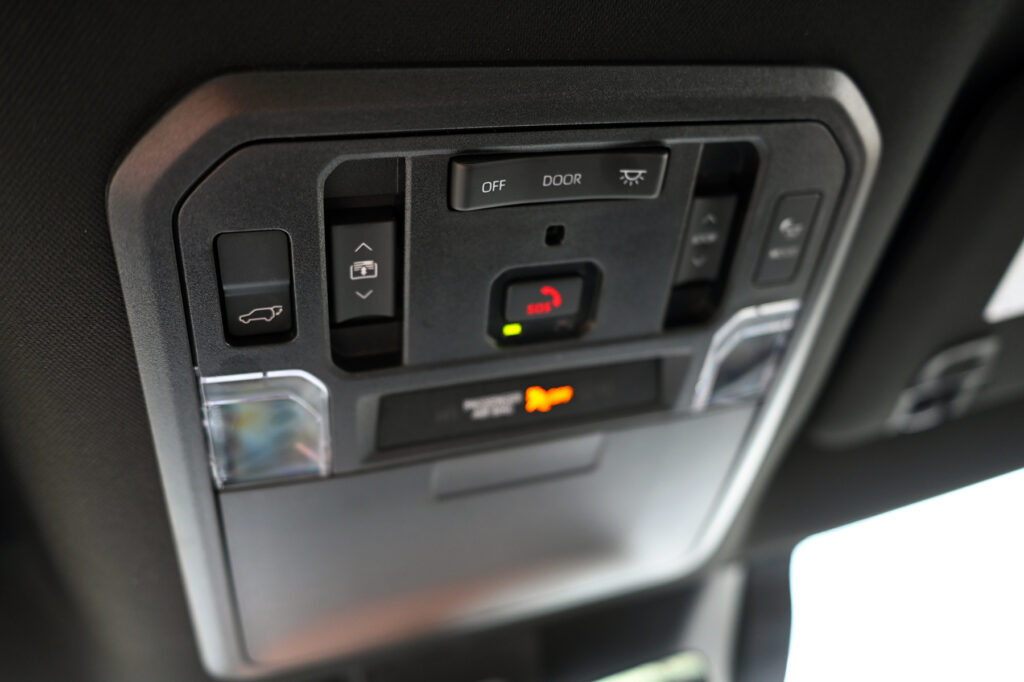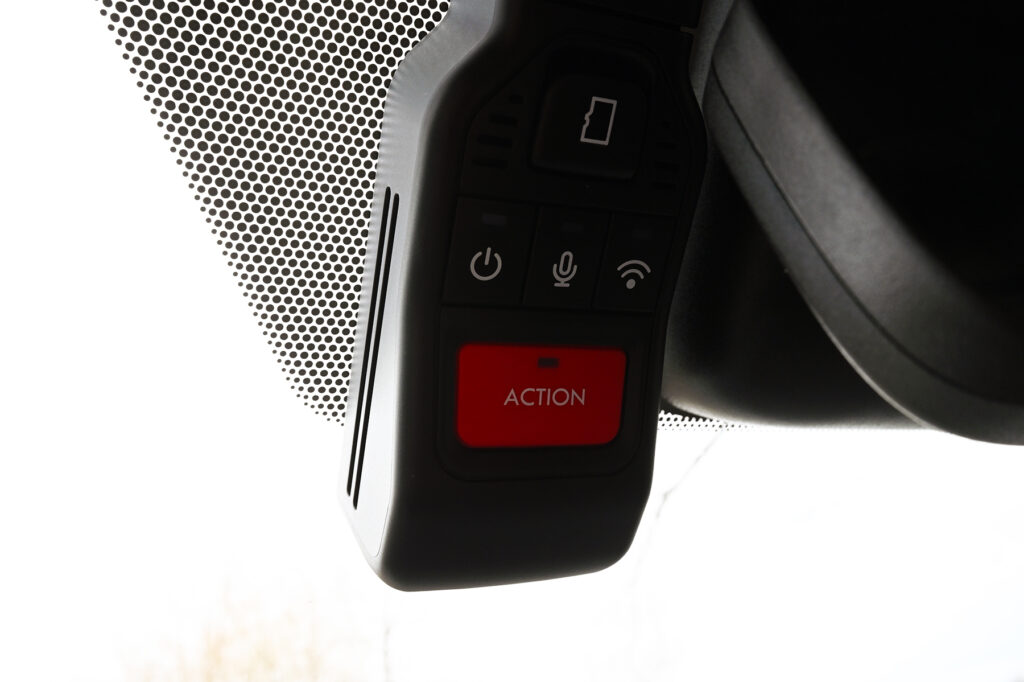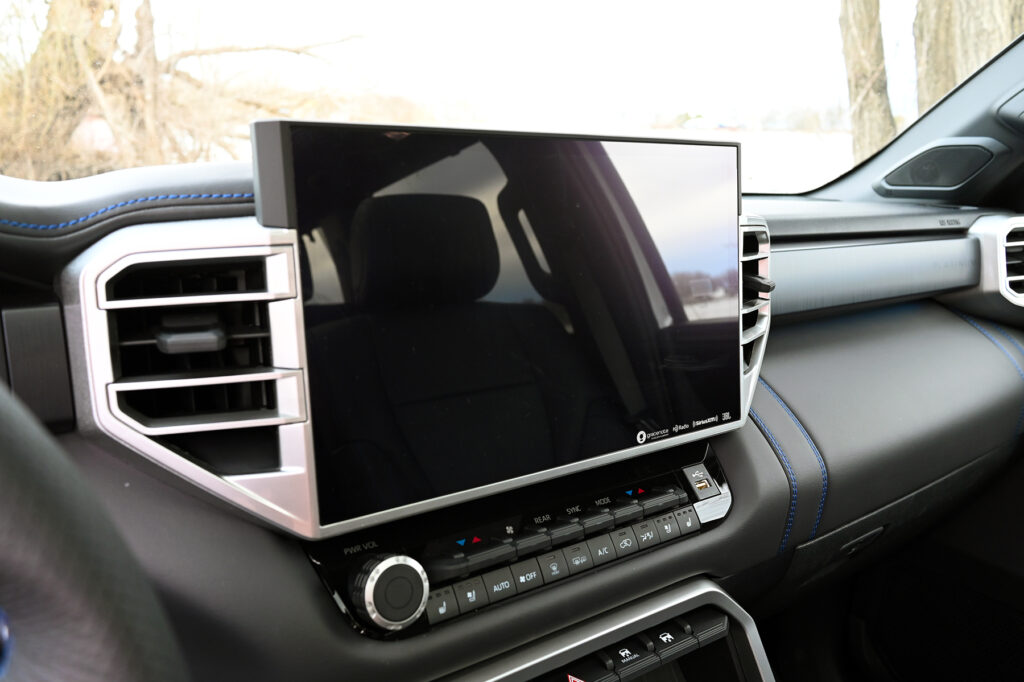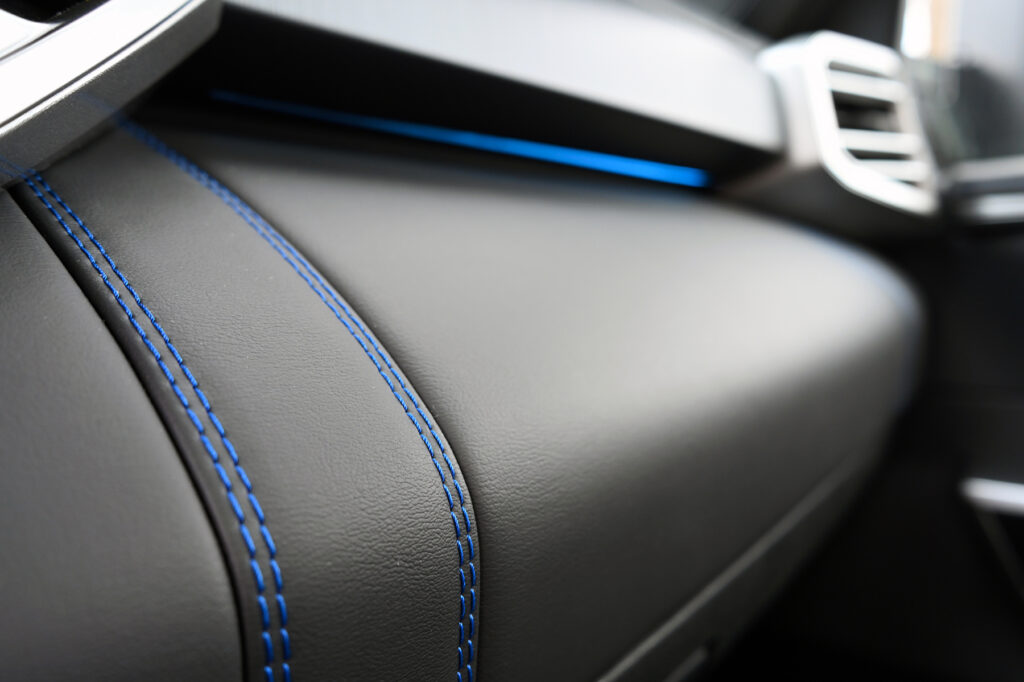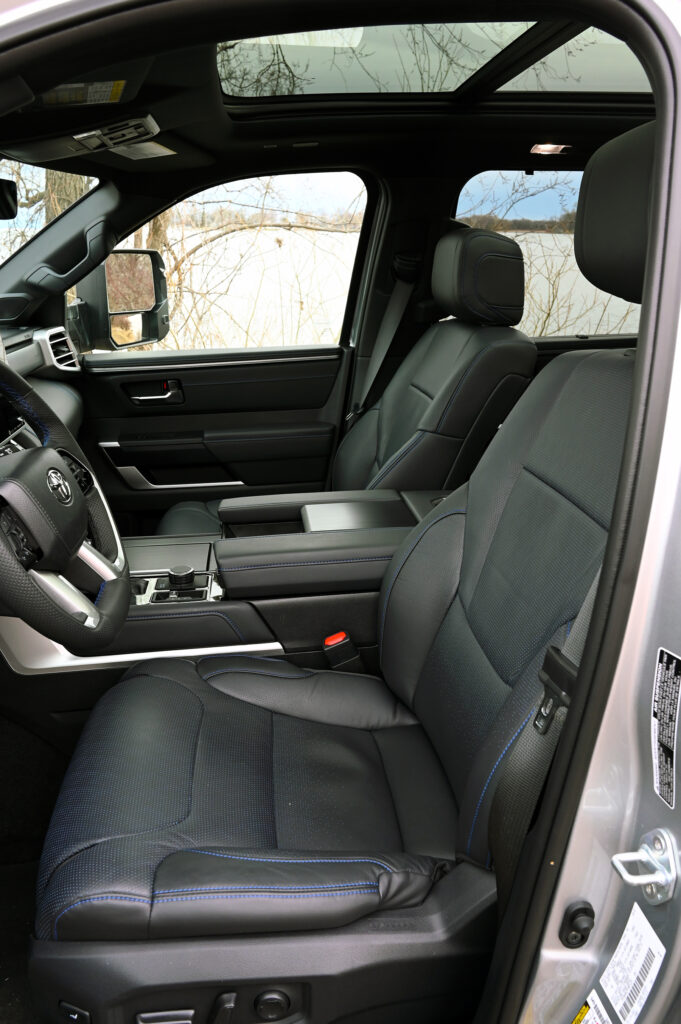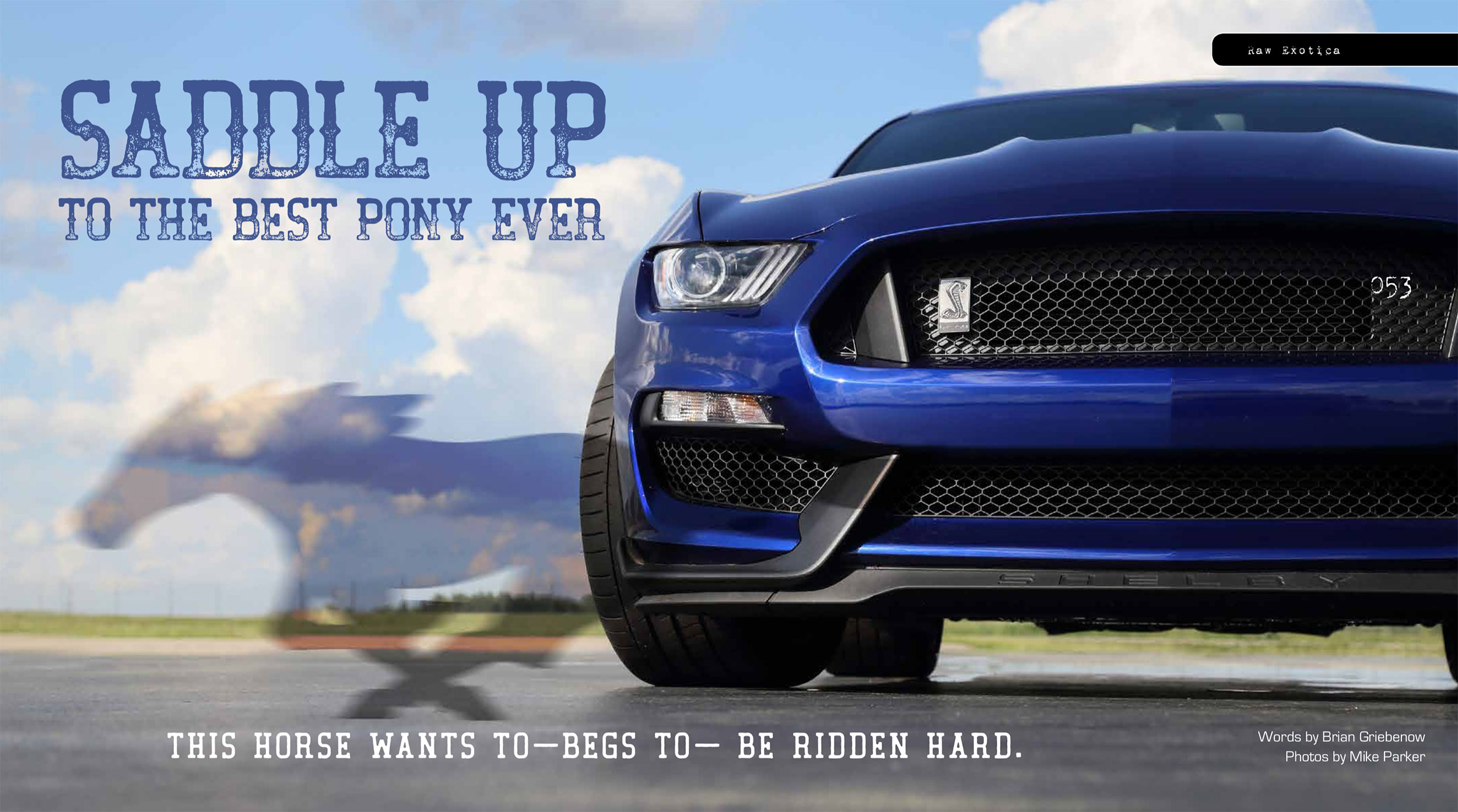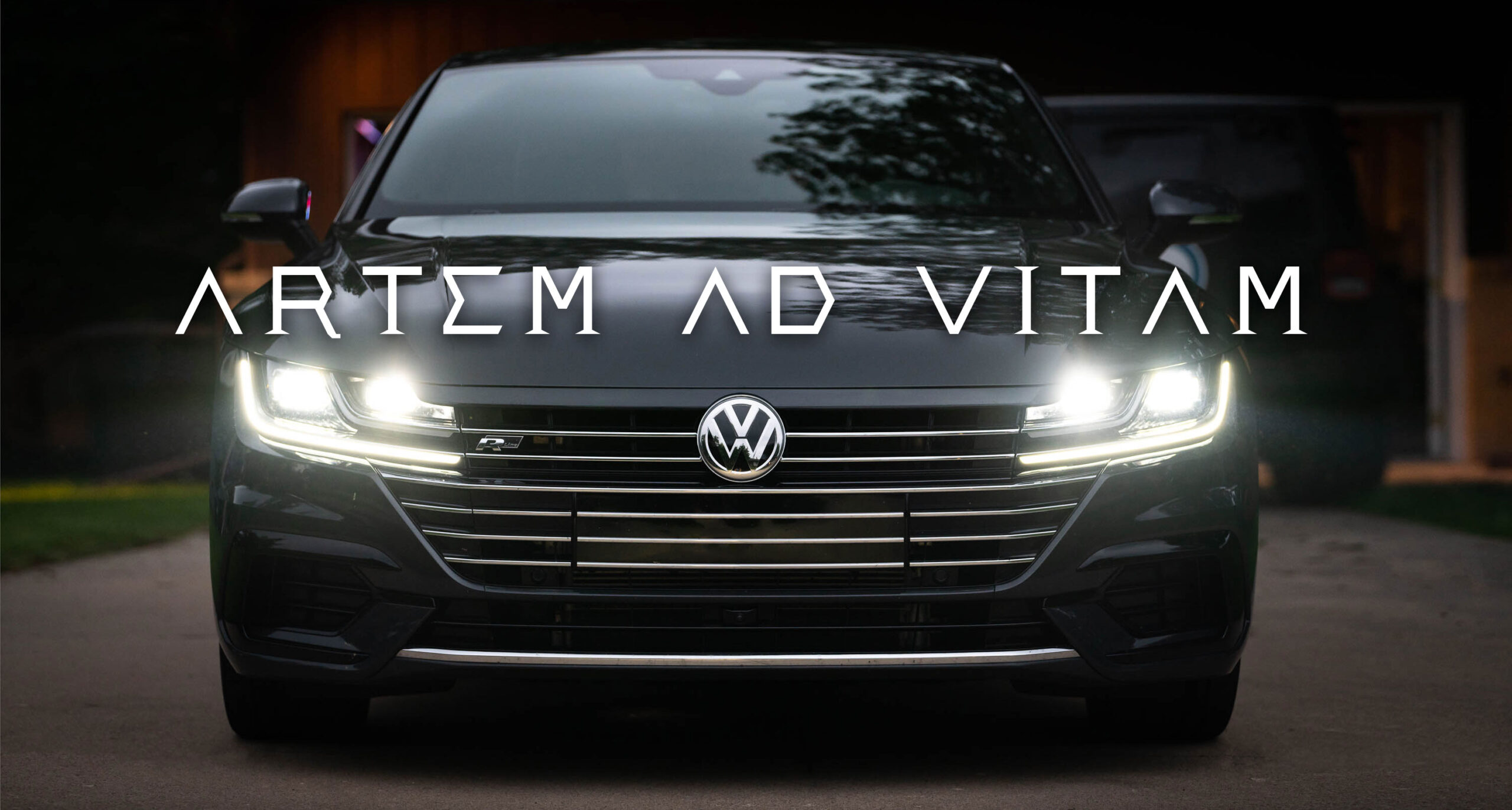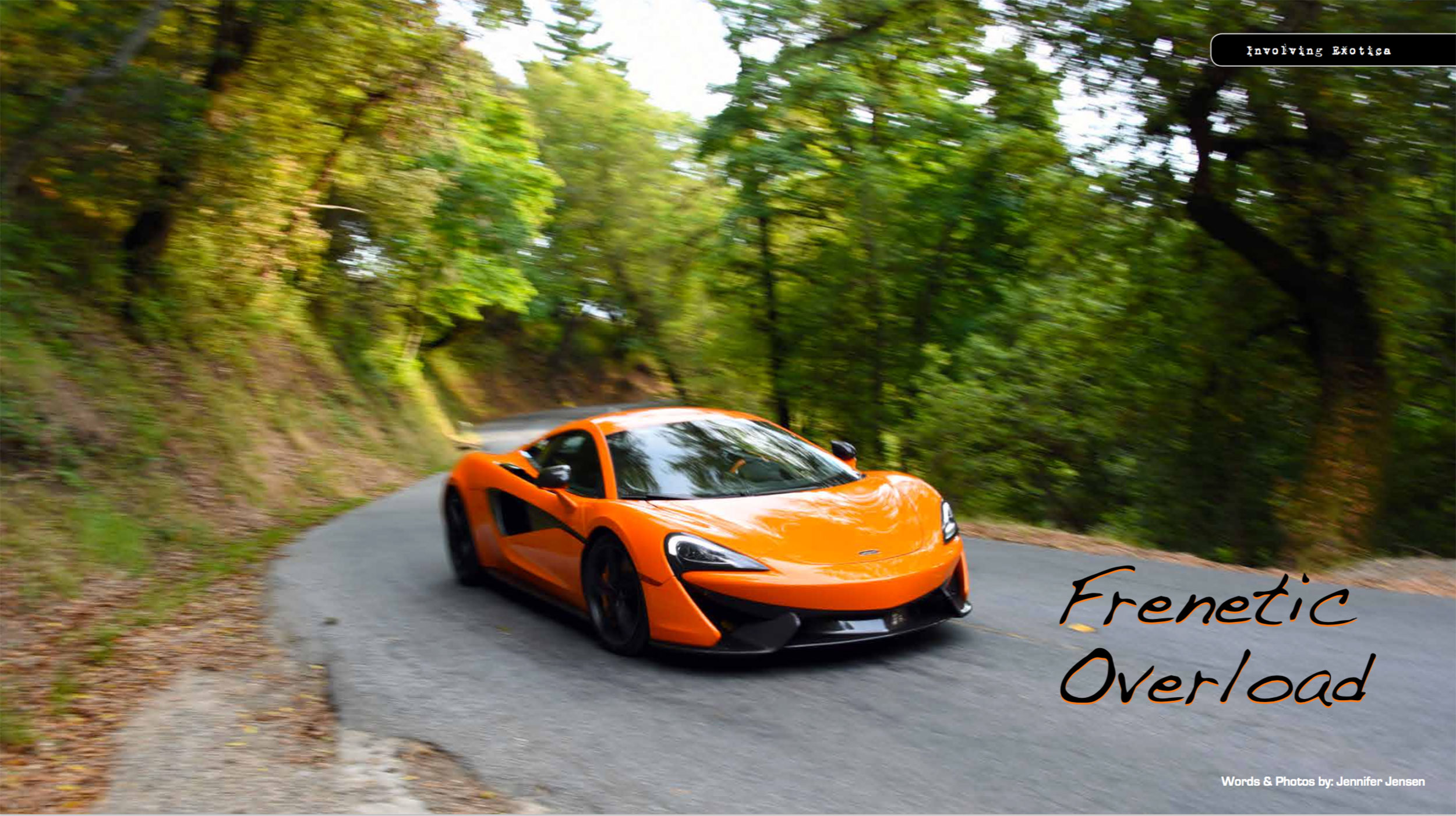Toyota Sequoia: The Family-Sized, Truck-Based SUV Trying to Be All Things
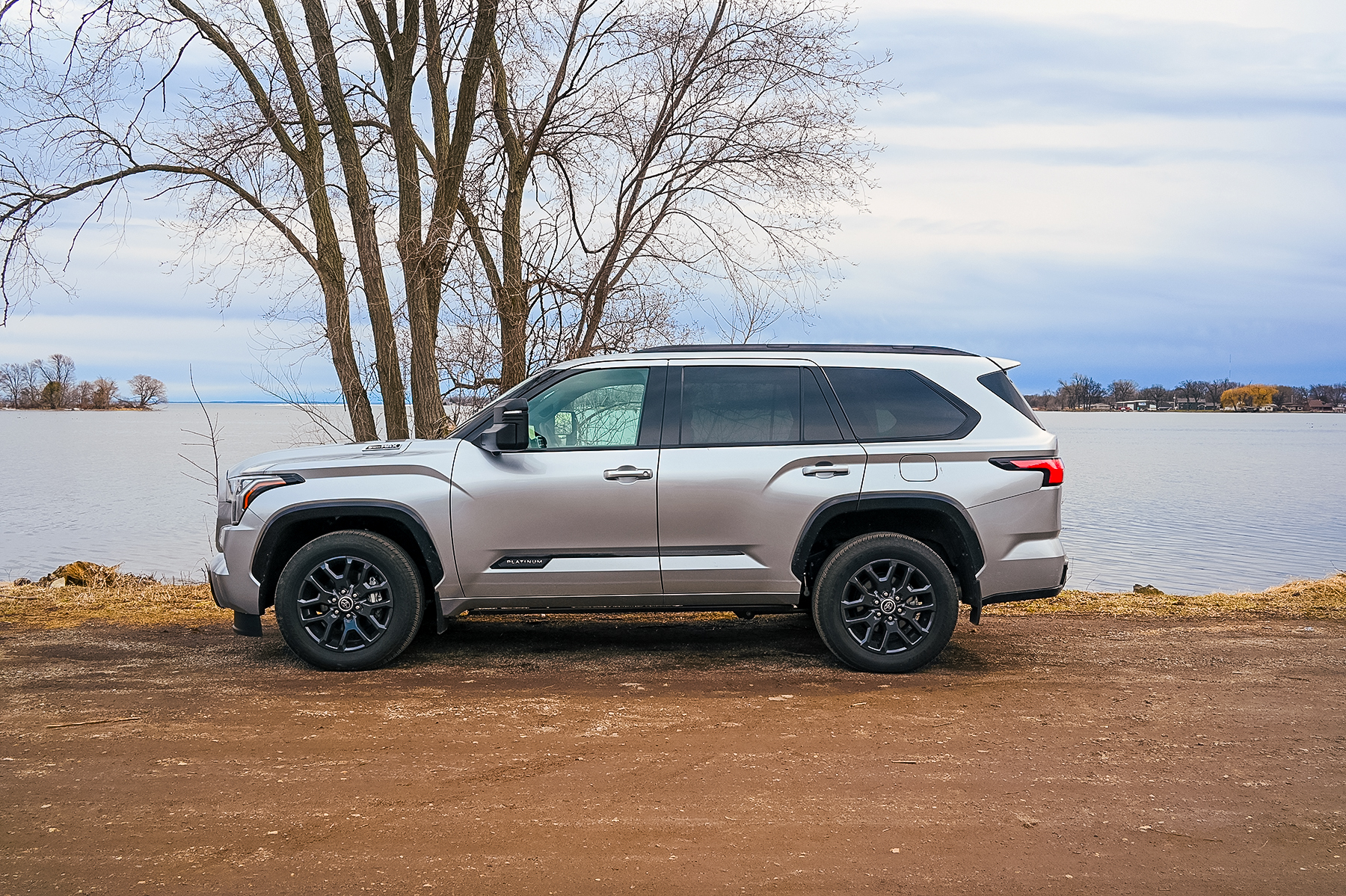
Words and Photos by Jennifer Jensen
Welcome to the Toyota Sequoia Platinum, Toyota’s biggest SUV, aptly named for the massive Sequoia tree – tall, broad, and old-school tough. At least according to Toyota. The Sequoia’s roots date back to when big, truck-based SUVs ruled the family-hauling landscape. Today, the new Sequoia retains those family-friendly traits but comes with a fresh, modern design and a new hybrid powertrain under the hood. This is a full-size SUV trying to adapt to an SUV world dominated by unibody crossovers.
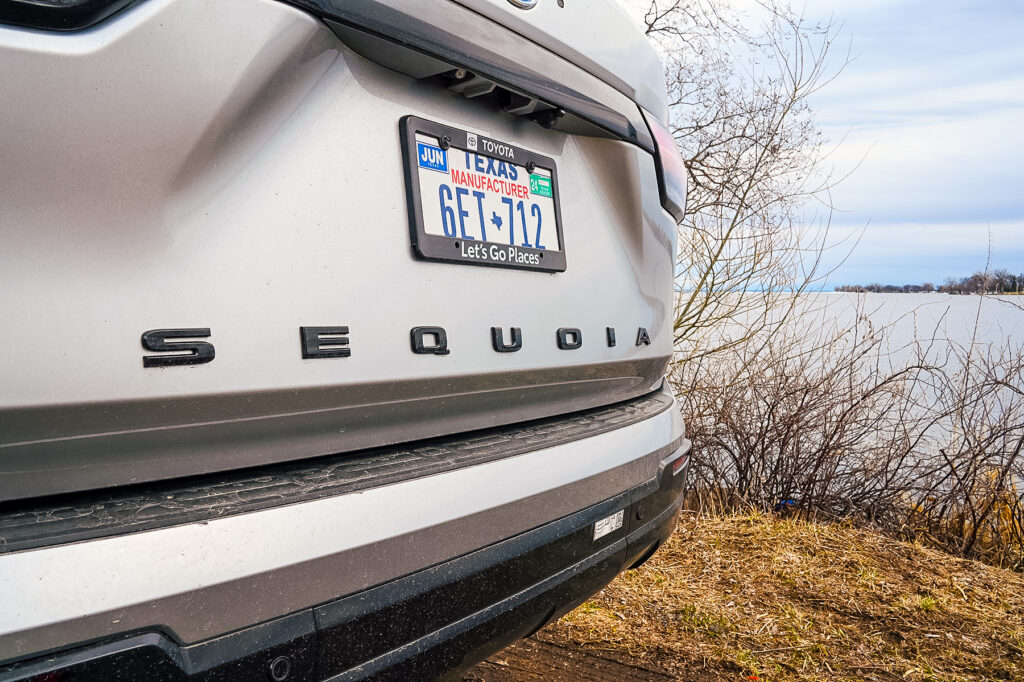
New Platform, New Powertrain
For 2023, the Sequoia was fully redesigned. It is built on Toyota’s TNGA-F platform, the same architecture shared with the Tundra and the global Land Cruiser. This is a traditional body-on-frame setup, designed to handle heavy-duty work and serious towing. Compared to its predecessor, the frame is stiffer and lighter – Toyota claims it’s 20% stiffer than the previous Sequoia and 10% lighter.
Under the hood, the beloved V8 is gone, replaced by Toyota’s hybridized 3.5-liter twin-turbo V6, which Toyota calls the i-FORCE MAX. This powertrain is also shared with the Tundra and, in Sequoia guise, delivers 437 horsepower and a stout 583 pound-feet of torque. Power is routed through a 10-speed automatic transmission, and if you’re familiar with Toyota’s hybrid setup, you’ll recognize the electric motor sandwiched between the engine and transmission, working in tandem to provide more torque and better fuel economy than the former V8.
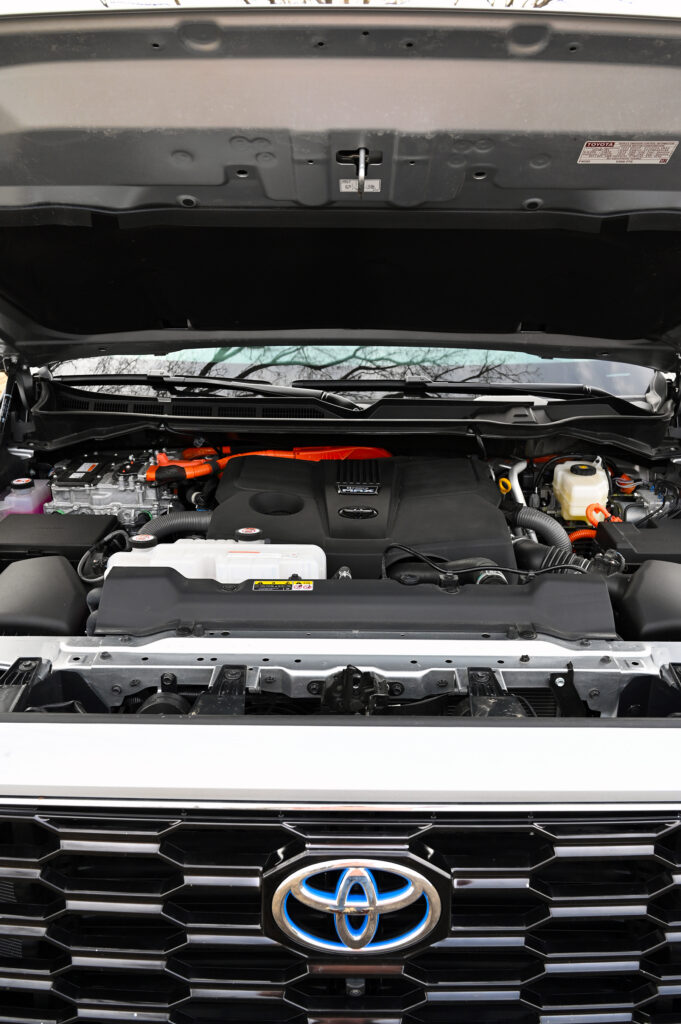
While the platform is shared with the Sequoia’s stable mate Tundra, Toyota is clear that the Sequoia is not just a three row Tundra with a roof over the back end. Toyota’s media kit says the Sequoia was designed to look tough and aggressive. It does have a big ole’ grille in front that looks like it could devour small cars that get in the way, but the rest of the design looks clean and relatively modern. At least to my eyes.
Interior: More Room (Mostly), Big Screen Tech, but Still Missing Some Modern Touches
Step inside the Sequoia, and it’s clear Toyota has aimed to make this a comfortable place to spend time. The cabin’s layout is spacious, and is intelligently laid out for ease and simplicity. Something Toyota has always excelled at in the truck department is making controls easy to use with bare hands or with gloves on. I did find myself ducking into the driver’s seat with the somewhat lower roofline, but with a full panoramic roof the cabin feels light, airy, and welcoming. However, for actual space, this cabin doesn’t quite match some of the segment’s more generous competitors.
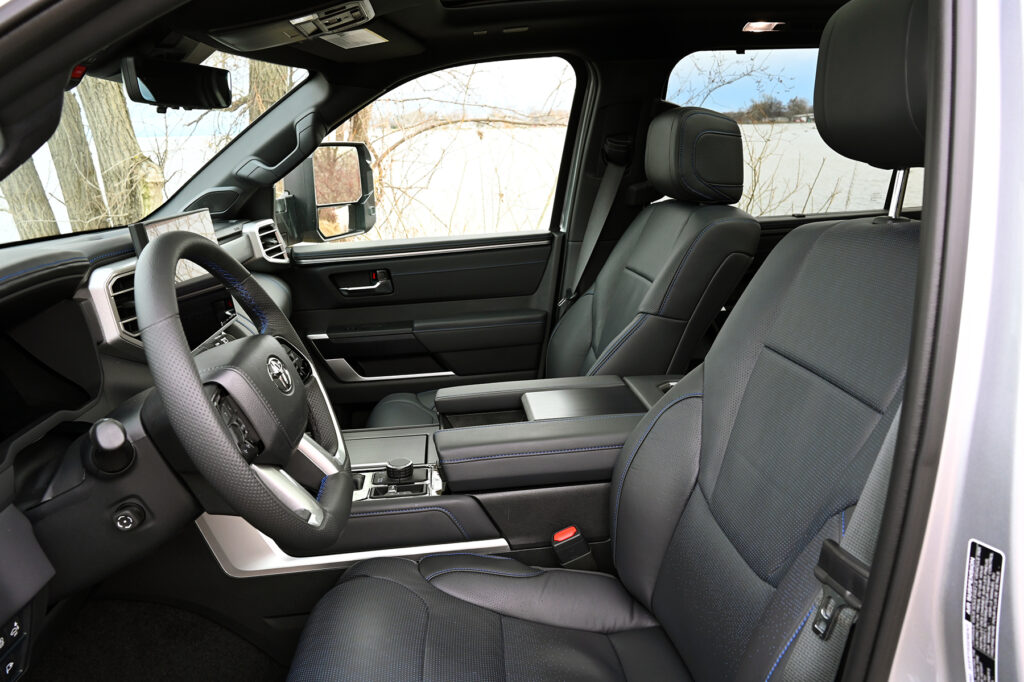
In terms of tech, Toyota did a nice job giving the Sequoia a modern feel. All Sequoias come with a 12.3-inch digital instrument cluster with selectable gauges. Lower trims have an 8-inch touchscreen in the center but upper trims, like this Platinum, have a massive 14-inch touchscreen on the dash. That screen is just awesome. It’s like sitting in your living room and having a 70-inch TV about ten feet away.
Toyota’s latest multimedia system is here, and it’s a solid improvement – quick, responsive, and simple to navigate. There’s wireless Apple CarPlay and Android Auto, so no need to fiddle with cords. However, there is not a “home” button on the screen. So if you’re in CarPlay or the navigation and you want to get to the main menu you have to back out instead of just hitting “home.”
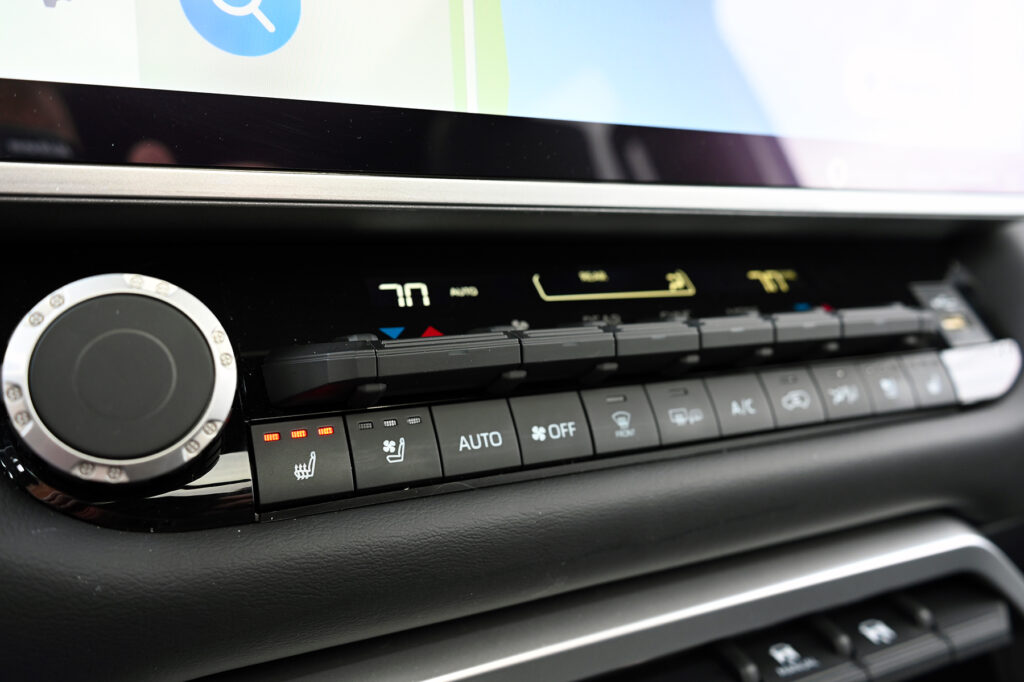
Toyota’s engineers wisely kept physical knobs for HVAC and volume controls. The toggles for temp and fan speed are no-nonsense great. There are some weird choices though. Like the button for the heated steering wheel being by my left knee instead of, well, on the steering wheel. And then there’s the button to open the rear hatch. Finding some of the buttons is almost like finding an Easter egg. For the most part though, Toyota did a good job with the design.
Second and Third Rows: Room for Improvement
The Sequoia offers the choice of captain’s chairs or a bench in the second row. Our Platinum had heated and cooled second-row captain’s chairs. These seats are roomy, and if you’re hauling people, they’re comfortable for hours. Surprisingly, and disappointingly, they do not slide fore and aft.
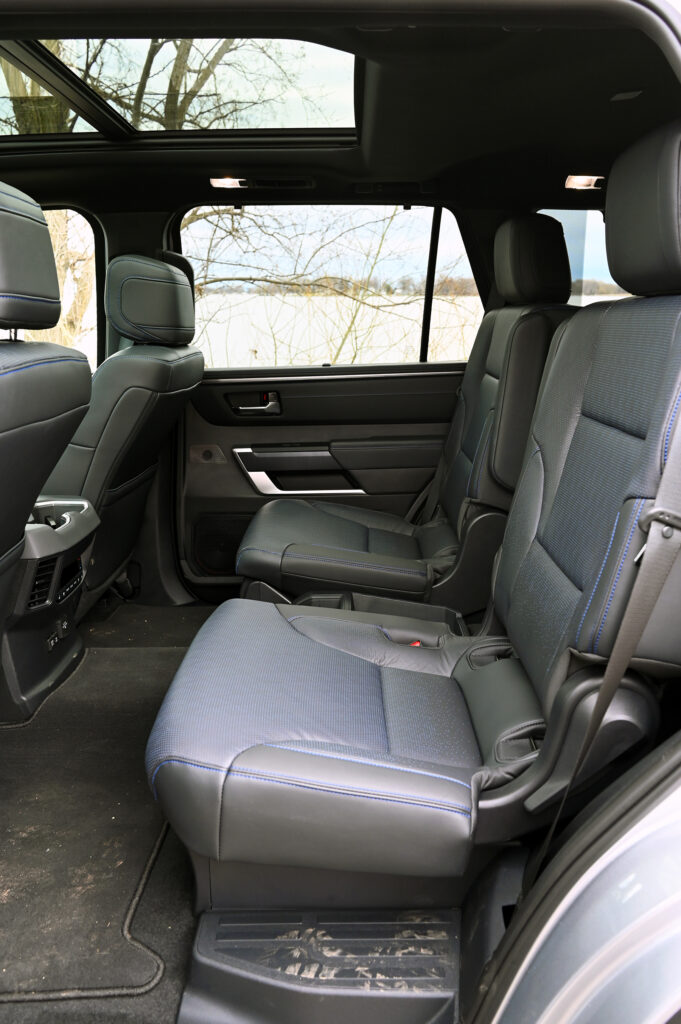
Getting into that third row is a cinch. There’s one little toggle to pull on the second row, and the seat flips down and tilts forward. Boom, easy access. However, there are two problems. Number one, if you just want to lay the seat down to make a flat surface, it’s still going to pop up. You have to click it back down. Not a huge deal, but it’s there.
Number two is a bigger deal. If you’ve got kids in car seats, you’re going to have them in the second row, not the third row. But you can’t flop the top of the seat down with a car seat in that second row. So car seats are going to be an issue in the second row if you want to get to the third row.
The third row is actually pretty roomy. The seats can slide fore and aft, and they tilt back helping to make seating in the third row decently comfy. With the Sequoia’s hybrid battery pack stashed under the rear seats, that third row is elevated, limiting headroom and pushing your knees up more than you may like.
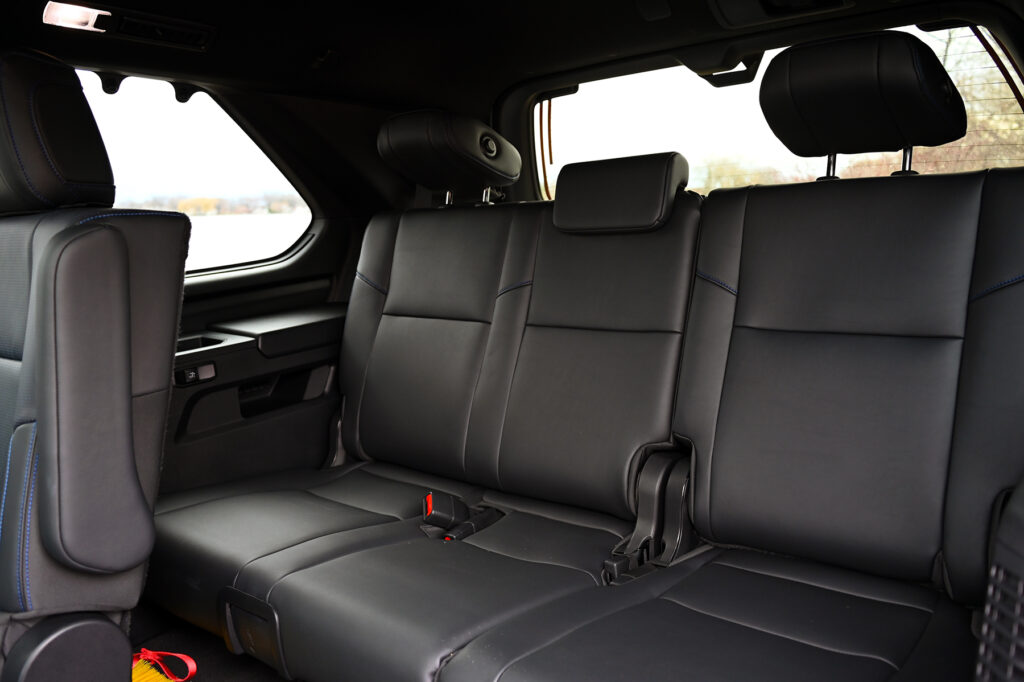
Also because of the battery pack, those third row seats don’t fold flat into the floor. Toyota’s solution is a unique cargo shelf system, in the tailgate, that allows you to move the floor, so to speak. The shelves help to make it so the “floor” is even with the third row seats when they’re folded down. It works well for grocery bags or smaller items. However, if you’re moving bulkier cargo, this elevated floor can be a nuisance.
Knowing we had the Sequoia coming, I planned to move some larger shelving units from one office to another. If you are getting a big truck, you gotta use it like a big truck! The non-flat load floor actually helped in this situation as I could lean the shelving unit into the back of the Sequoia and use the little “hill” of the third row as an axis point to lift and slide the shelves into the back.
The old Sequoia had a roll down window in the back hatch. That lovely trinket is now gone and in its place is a pop out window. There is a button to release the glass and it’s nice that you don’t need to open the whole heavy hatch to access storage behind the third row. That storage is limited with the third row up, but those seats can be pushed forward a little to make more space in the back.
Road Manners and Off-Road Aspirations: Towing, Composure, and Not Much Hybrid Economy
The Sequoia Platinum is an interesting blend of old-school SUV robustness and modern tech. It can tow up to 9,520 pounds, which makes it one of the most capable full-size SUVs in the segment. However, the fuel economy benefit expected from a hybrid powertrain just isn’t there. Toyota claims 19 mpg city and 22 mpg highway, but I averaged closer to 15.5 mpg over a week of mixed driving. The onboard computer claimed 16.5 mpg, but my real-world fill-ups told a different story. That’s without towing anything.
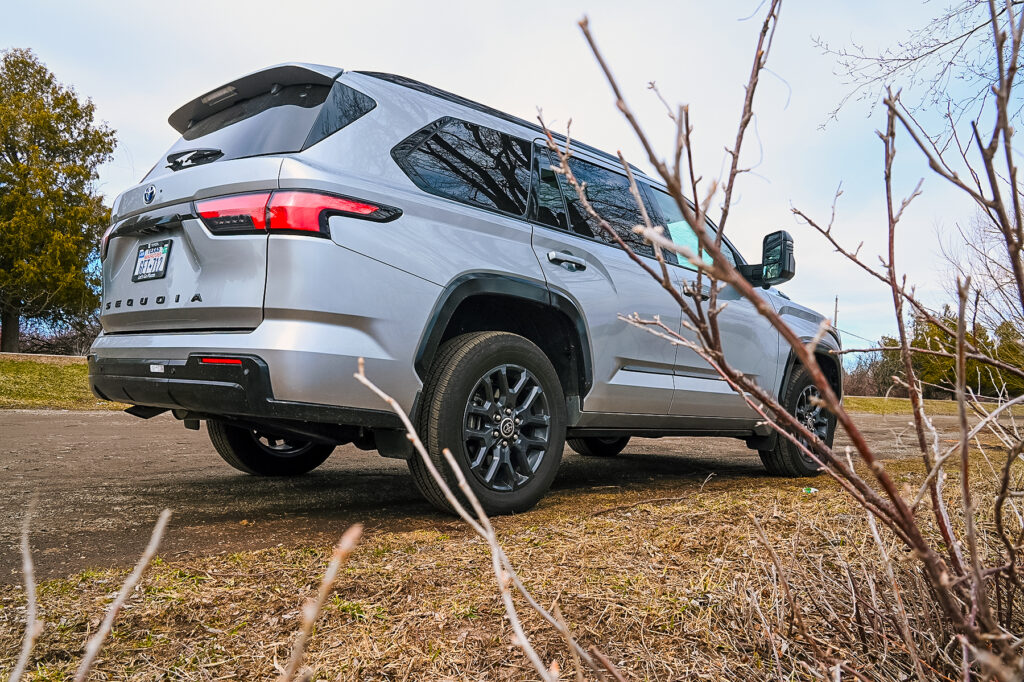
The Sequoia offers different driving modes. Our Platinum had the optional air suspension so we had six driving modes to choose from: Eco, Normal, Comfort, Sport, Sport+, and Individual. There’s a distinct difference between modes, particularly between Comfort and Sport+. In Comfort mode, the Sequoia has that traditional SUV floatiness; it’s soft and absorbs bumps well but rolls in corners. Switch to Sport+ and things tighten up considerably.
In Normal mode, the ride quality is not great. So I defaulted to comfort for most of my time with the Sequoia. However, my spouse and I took a 200 mile round trip drive and we were on the highway for most of that trip. The Sequoia was just sort of heaving back and forth like a wild bronco and it actually made my sweetheart sick, like, headache, kind of queasy, stomach. So even comfort mode wasn’t what we had hoped for. I shudder to think (pun intended) about a non air-suspension equipped model and how that’s going to play out for ride quality.
I also came to realize that I wasn’t super comfortable in the Sequoia over a long haul either, mostly due to the front seat. Those seats are wide but they lack bolstering and under thigh support. So even with the seat heater on I was fidgeting after about half an hour behind the wheel. That steering wheel also just didn’t feel right to my hands either. I’m not sure if it was the thickness or the materials, but it didn’t feel particularly good in my hands like the wheel in Toyota’s Prius does.
To make matters worse, the Sequoia is loud on the road, at least at highway speeds. There are large mirrors and they create a lot of wind noise, as does that gorgeous panoramic roof. You can close the shades on the roof to quiet things down a bit, but I was really surprised at the noise level in the cabin.
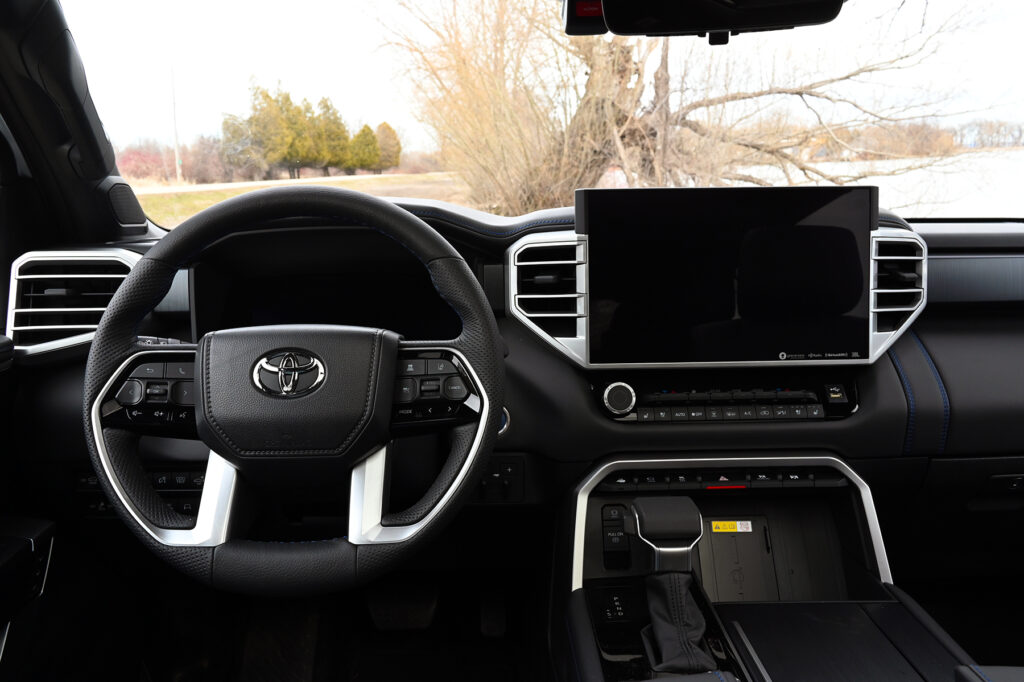
Then there is the matter of outward visibility. The front window is not a panoramic view of the world. The roof cuts in, and it creates a somewhat letter box view out the front. Looking over my left shoulder, the B-pillar is thick which further obstructs my outward view. If I look over my right shoulder and the headrests are up on the second row, I can’t see out that third window at all.
And those huge mirrors! You would think you’d be able to see everything next to and behind you, but in reality whole trucks can hide in your blind spot with those mirrors. It’s kind of crazy. I adjusted the top of the mirror out more than I normally would, because there was the small sort of towing mirror just so I can find good visibility enough where I’m not going to careen into a car next to me. Yes, there’s blind spot monitoring, but wow, I am really disappointed in the visibility of the Sequoia.
One nice touch: the Sequoia includes two cruise control modes. A button on the steering wheel lets you toggle between adaptive cruise control and standard cruise, giving you the choice to keep pace with the car in front or just maintain a set speed. It’s a small but convenient feature that I really wish more manufacturers would consider.
That Hybrid Powertrain
How does the hybrid powertrain fare against the old V8? The i-FORCE MAX hybrid system is tuned to give you maximum torque at a low 2,400 rpm, so when you need the power, it’s there. Stomp on the gas in Sport+, and this big SUV surprises with how quickly it moves. It sounds pretty good too.
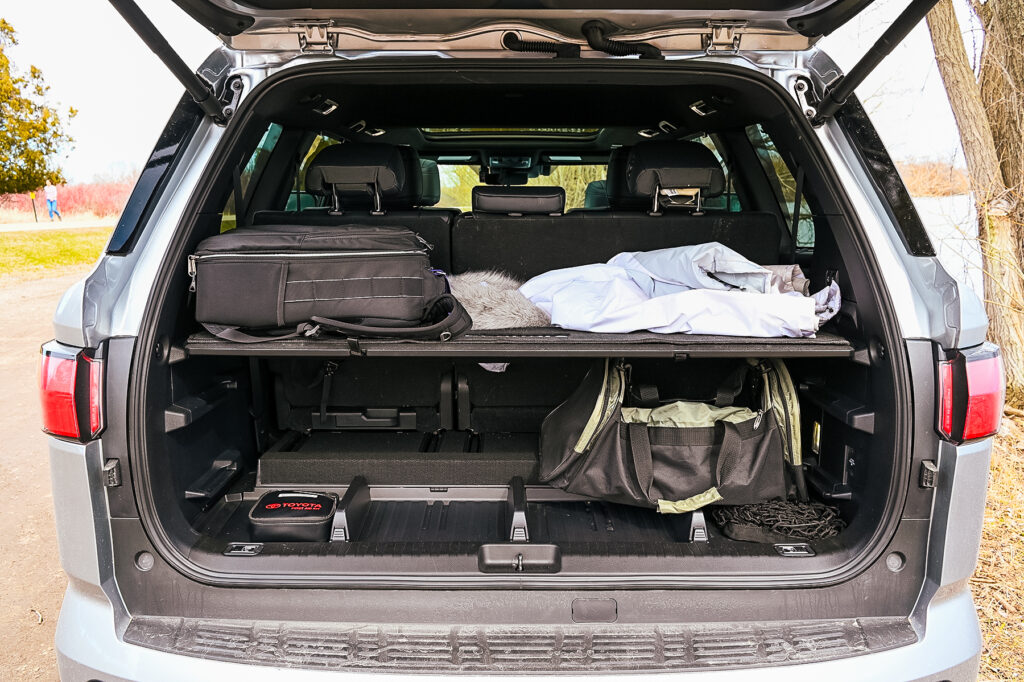
With a 22.5-gallon fuel tank you can expect over 300 miles on a tank of gas, but I started wondering how the Sequoia would perform without the hybrid system. If there was just the 3.5-liter twin-turbo V6. You’d be down about 50 horsepower and 184-ish lb-ft of torque, but the Sequoia would also be considerably lighter. I don’t know if you’d lose anything.
Summing Up the Revised Toyota Sequoia: Big Power, Big Price, but Some Rough Edges
The revised Sequoia is a capable SUV with a smooth powertrain and impressive towing capacity. The interior is well-designed, even if it has some oddly placed controls. Toyota’s tech is solid, with big, responsive screens, easy-to-navigate menus, and a good JBL sound system on the Platinum trim. But there are compromises here. The third row and cargo space don’t measure up to more practical options like the Chevy Suburban or Ford Expedition, the ride quality leaves something to be desired, passenger comfort in the front seats is lacking, and at nearly $80,000 for the Platinum, the Sequoia is an investment.
So, is it worth it? I’m not sure. Toyota makes some great products and I wanted to love the Sequoia more than I did. It does look the part and, in most criteria, it does deliver. There is room for the whole family and you can tow a house so they’ve done a number of things right. But the disappointing mileage and ride quality really linger in my mind and would probably eliminate the Sequoia from my purchase list if I was in the market. But you need to make that decision for yourself, so if you want a rugged, family-hauling SUV that can tow, handle rough roads, and deliver a dose of Toyota’s reliability, the Sequoia might fit the bill for you.

